Bookshop
|
ISBN 978-9985-58-990-8 |
Lahendusele orienteeritud maaliteraapia Bettina Egger, Jörg Merz In today's rich landscape of different psychotherapy methods and trends, solution-focused art therapy (SFAT) has achieved a prominent position. It was developed by Swiss art therapist and psychologist Bettina Egger and clinical psychologist Jörg Merz. In their book Solution-Focused Art Therapy: How Images Guide Emotions, they use numerous examples and images to illustrate the possibilities of their method. In solution-focused art therapy, simple, clear shapes and images are painted under the guidance of a therapist. This method is characterized by two central elements: staying with the image and treating clients and their paintings with respect and care. Egger and Merz's authentic presentation and explanations of the images allow us to understand how therapists thought and acted in these cases and what explanations can be found in neuroscience. The book describes quick successes, but also cases where finding a solution takes time and the initial art therapy experiences are painful. The book is an interesting read for anyone who supports people in finding solutions to problems in their professional work, but the cases described can also serve as a guide for self-help. |
|
ISBN 978-9985-58-988-5 |
Planta Sapiens Paco Calvo and Natalie Lawrence It´s not a question we might think to contemplate, even though many of us live surrounded by plants. Science has long explored the wonderful ways in which plants communicate, behave and shape their environments: from chemical warfare to turning their predators to cannibalism. But they´re usually just the backdrop to our frenetic animal lives. While plants may not have brains or move around as we do, cutting-edge science is revealing that they have astonishing inner worlds of an alternate kind to ours. They can plan ahead, learn, recognise their relatives, assess risks and make decisions. They can even be put to sleep. Innovative new tools might allow us to actually see them do these things - from electrophysiological recordings to MRI and PET scans. If you can look in the right way, a world full of drama unfurls. In Planta Sapiens, Professor Paco Calvo offers a bold new perspective on plant biology and cognitive science. Using the latest scientific findings, Calvo challenges us to make an imaginative leap into a world that is so close and yet so alien - one that will expand our understanding of our own minds. From their rich subjective experiences to how they are inspiring novel ways of approaching the ecological crisis, Planta Sapiens is a dazzling exploration of the lives of plants and a call to approach how we think about the natural world in a new, maverick way. |
|
ISBN 978-9985-58987-8 |
Heaolu Estonian philosopher Margus Otti's comprehensive and multifaceted essay "Wellbeing" takes us on a journey of reflection on what kind of being is good, how being could be even better, and what kind of being could be best. Focusing first and foremost on human wellbeing, Ott explores a range of topics from wellbeing metrics to human relationships, from the arts to the natural environment, and concludes that being itself is already good, incomparable, absolute, but that it can always be even better: "The best being is at once at hand and out of hand. That is superb." Margus Ott received his PhD in Philosophy from the Estonian Institute of Humanities, Tallinn University in 2014. He has taught philosophy at many Estonian universities and his main research topics are complexity, temporality, embodiment and comparative philosophy. |
|
ISBN 978-9985-58-980-9 |
Inimgeograafia alused. Õpik kõrgkoolidele Edited by Hannes Palang and Tiit Tammaru Human geography is the study of the networked and intertwined relationships between people, space and time. The textbook provides an overview of the branches and directions of human geography, establishes links between them and helps the reader to navigate in the diversity of the world. It points the way to a deeper understanding of the branches of human geography and tries to explain how economy, population, power and culture are expressed in the urban and the rural and merge into the landscape. The textbook is intended primarily for geography students, but also for anyone interested in deepening their understanding of what shapes the world beyond their immediate surroundings. |
|
ISBN 978-9985-58-981-6 |
Neljatine objekt Afterword: Rein Raud In this book the metaphysical system of Graham Harman is presented in lucid form, aided by helpful diagrams. In Chapter 1, Harman gives his most forceful critique to date of philosophies that reject objects as a primary reality. All such rejections are tainted by either an undermining or overmining approach to objects. In Chapters 2 and 3, he reviews his concepts of sensual and real objects. In the process, he attacks the prestige normally granted to philosophies of human access, which Harman links for the first time to the already discredited Meno's Paradox. In Chapters 4 through 7, Harman brings the reader up to speed on his interpretation of Heidegger, which culminates in a fourfold structure of objects linked by indirect causation. In Chapter 8, he speculates on the implications of this theory for the debate over panpsychism, which Harman both embraces and rejects. In Chapters 9 and 10, he introduces the term ontography as the study of the different possible permutations of objects and qualities, which he simplifies with easily remembered terminology drawn from standard playing cards. |
|
ISBN 978-9985-58-979-3 |
Mõisa fenomen Balti kultuuriloos. Vaatenurki üle uurimisväljade Edited by Kristina Jõekalda, Linda Kaljundi, Ulrike Plath Manor houses can be considered one of the best known and most popular phenomena in Estonian cultural history – they are studied, visited, written and talked about, photographed and filmed, restored, bought and sold. The manor is one of the few elements of the Baltic German heritage that has acquired a firm place in the Estonian national cultural memory and heritage landscape. However, there seems to be reason to ask whether the public image of manors is not too one-sided. This volume is born out of the conviction that the manor is a phenomenon of key importance for the analysis of Baltic history and culture. In order to understand it better, we should look beyond the manor house and the landlord, and seek new perspectives through cooperation between different disciplines. In this book, scholars from different disciplines explore the manor as a phenomenon around which many of the main themes of the multi-ethnic history of the region are centred: the manor helps to shed light on the history of the interaction of Estonian and Baltic German cultures. Among other things, the collection opens up new perspectives on the earlier history of manors, the importance of material culture and art as a source of manor history, the role of research and restoration practices in transforming the meaning of manors, cultural images of manors at different times, and the ambivalent manorial relationship between Baltic Germans and Estonians. |
|
|
Eesti võõrkeelne raamat ja Estonica 1494–1830 I: Kronoloogiline nimestik 1494–1710 Editors: Helje-Laine Kannik, Kertu Maasik, Tiiu Reimo, Aira Võsa The first volume of the bibliography covers foreign-language publications up to 1710, including the earliest known writings by authors connected with Estonia. It features works by Livonian scholars that reached European universities and accounts of the Livonian War and its aftermath. Estonia established its own printing presses in Tartu, Tallinn, and Narva during the 1630s, although works by local authors were also published abroad. The early years of the Great Northern War are marked by a predominance of state power orders in printed materials, with fewer works on other subjects being published. The bibliography provides information on the locations of these printed works in Estonian and international repositories, as well as the availability of known digital copies. The year 1710 is significant as it marks Estonia and Livonia's transition to Russian tsarist rule. |
|
|
Eesti võõrkeelne raamat ja Estonica 1494–1830 II: Kronoloogiline nimestik 1711–1830 Editors: Helje-Laine Kannik, Kertu Maasik, Tiiu Reimo, Aira Võsa The second volume of the bibliography focuses on foreign-language publications from 1711 to 1830. The period immediately following the Great Northern War saw limited print production, with educational and cultural life beginning to recover only by the mid-18th century. A more vigorous development emerged in the last quarter of the century, driven by intellectuals who had moved to Estonia and Livonia, mainly from Germany. Their works introduced Enlightenment ideas and provided critical perspectives on local conditions and the peasantry. This era witnessed the emergence of weekly newspapers, early experiments with magazines, and the first written critiques of serfdom. At the turn of the century, August von Kotzebue became a prominent European writer of both fiction and non-fiction. The reopening of the University of Tartu brought a wave of scholars to Estonia, catalyzing the publication of scientific literature and advancing studies in natural and historical sciences related to Estonia and Livonia. Local navigators and explorers expanded global knowledge through their voyages, while many scholars from this region gained recognition at the St. Petersburg Academy of Sciences in the 19th century. The bibliography includes detailed information about the locations of these publications in Estonian and international repositories, as well as references to known digital copies. By international agreement, 1830 marks the conclusion of the hand-printing era in Europe. |
|
|
Eesti võõrkeelne raamat ja Estonica 1494–1830 III: Registrid Editors: Helje-Laine Kannik, Kertu Maasik, Tiiu Reimo, Aira Võsa The third volume of the bibliography provides comprehensive indexes to enhance usability. These indexes include categories such as name, title, organization, subject, place name, place of publication, printing house, press, and language. Additionally, the volume features brief biographies of several authors, complete with references to sources. At the end of the volume, there is a list of sources and literature utilized in compiling the bibliography, along with a directory of repositories where foreign-language and Estonica books published in Estonia are held. This structure ensures that users can efficiently navigate the bibliography and locate relevant materials in both physical and digital formats. |
|
|
Eesti võõrkeelne raamat ja Estonica 1494–1830 I–III Editors: Helje-Laine Kannik, Kertu Maasik, Tiiu Reimo, Aira Võsa The Estonian Foreign Language Book and Estonica 1494–1830 is a part of the Estonian Retrospective National Bibliography project, initiated several decades ago. This three-volume bibliography compiles publications in foreign languages authored by individuals residing in Estonia, as well as key works about Estonia published abroad, spanning the period from the advent of the printing press to the end of hand-operated printing presses. The volumes include German translations to facilitate use by foreign-language researchers. This resource is designed for curators managing collections of old prints in Estonian and international memory institutions, as well as for researchers and enthusiasts focusing on the early modern period. The bibliography is complemented by indexes, making it a valuable tool for exploring Estonia's cultural and historical contributions through printed works. |
|
ISBN 978-9985-58-978-6 |
See värsikunst Edited by Călin-Andrei Mihăilescu Jorge Luis Borges' lecture series "This Craft of Verse", given at Harvard from 1967-1968, offers a deeply personal and extremely wide-ranging look at the art of poetry. Drawing on perceptive examples and incisive observations, Borges discusses the nature of poetry, imagery, language, translation and interpretation, storytelling, and life in general. In a final lecture, dedicated to the poet's credo, he also shares tips for the novice poet. Jorge Luis Borges (1899–1986) was an Argentine prose writer, poet and thinker whose influence on 20th-century literature and literary studies has been immense – he has been cited as a source of inspiration by Umberto Eco, Gérard Genette, John Updike, Jacques Derrida and Julio Cortázar, among others. Borges, who studied German and French at Geneva College, joined the avant-garde movement after his studies. In 1922 he founded the magazine Proa and concentrated on writing, publishing poetry, short stories and essays. In 1950, he was appointed professor of English literature at the Argentine Association for English Culture, and in 1955 he was appointed director of the National Library of Argentina. At the same time he lost his sight. So Borges, with his phenomenal memory, gave this series of lectures while already blind. The transcripts of these lectures, long thought lost, which were found at the beginning of this century, however, bring the voice of Borges vividly to the reader, with his wit and warmth nad love of poetry and life. |
|
ISBN 978-9985-58-977-9 |
Masinaõpetus. Inimese, tehnoloogia ja meedia sidemed Translated from Finnish by Elle Vaht Jussi Parikka, a pioneer in media archaeology and a renowned theoretician of neo-materialism, unravels the intertwined history of technology, media and human culture in his first book, published in Finnish in 2004. At the time of its publication, the field of digital culture and media theory was a little different from what it is today, but many themes have returned to the debate, such as cyborgs and artificial intelligence. Parikka's thought-provoking work is an exploration of how machines are shaping our culture, our thoughts and our understanding of existence in general. On a journey from cyberpunk dystopias to Deleuzean philosophy, Parikka questions the boundary between human and technology. Do machines think? Or has our thinking always been machine-like? The book takes us deep into the foundations of technology, where machines are not mere tools but active participants in culture. "Machinology" invites the reader to rethink the relationship with technology in order to find a human identity in a world increasingly defined by machines. This book is not just about technology, it is about us and how we evolve with the tools we create.
|
|
ISBN 978-9985-58-972-4 |
Heritage in History Education Edited by Anu Kannike, Mare Oja, Tiiu Kreegipuu, Andres Andresen The aim of this publication is to support history teachers and university teacher trainers in understanding and addressing cultural heritage issues in history teaching. Through history teaching, students learn about cultural heritage and different value systems, the changing meaning of heritage over time, the ability to relate past events to each other and to the present, and to understand the reasons for different interpretations of historical events and memory conflicts. The aim of the heritage education approach is to strengthen students' critical understanding of history and culture. The publication brings together articles that help the younger generation understand the past, reflect on the complexity of traditions, values and attitudes, and identities. |
|
ISBN 978-9985-58-971-7 |
The Spread of Orthodoxy and the Architecture of Churches in the Baltics of the 1840s–1917 Alexander Bertash Alexander Bertash’s book "The Spread of Orthodoxy and the Architecture of Churches in the Baltics of the 1840s–1917" makes a significant contribution to the understudied topic of Russian Orthodox church construction in the Baltic region during the late imperial period. Through comprehensive multi-archival research, this study not only examines the design of Orthodox churches but also provides a nuanced overview of the political and cultural colonization processes at play on the Empire's periphery. This lavishly illustrated volume presents the history of Orthodox architecture in the Baltics with unprecedented depth and detail, making it an invaluable resource for those interested in the dynamics of Russian Orthodoxy beyond the borders of Russia. |
|
ISBN 9772504661094 |
Philologia Estonica Tallinnensis 9 (2024) Edited by Luule Epner ja Piret Viires The ninth issue of Philologia Estonica Tallinnensis continues the exploration initiated in the sixth issue, published in 2021, which focused on cultural changes during the transitional period. The transition era, beginning in Estonia in the late 1980s and extending through the first decade of regained independence, brought rapid and profound societal changes. Influenced by social and economic shifts, the culture of transition was mosaic and contradictory, with uneven development across artistic genres and cultural fields. Tensions arose from the relationship with Soviet-era cultural heritage and the swift integration of contemporary Western culture. This issue examines changes in literature, theatre, and the intersection of visual arts and literature during this transformative period. In addition to Estonia, it also explores similar transitions in East Germany and Ukraine. Articles address topics such as the shift to postmodernism in Estonian theatre (Luule Epner), illness and metaphor in Madis Kõiv's dramaturgy (Piret Kruuspere), institutional changes in theatre and film (Kristiina Reidolv), Priit Pärn's children's book Tagurpidi (Mari Laaniste), depictions of post-socialist life in German and Estonian literature (Aigi Heero), and post-colonial identity in Halyna Pahutiak’s youth novel The World’s Eye (Irena Peterson). The opening article by Luule Epner and Piret Viires provides a general overview of the main features and contradictions of transitional culture. This collection offers valuable insights for anyone interested in the culture of Estonia and Eastern Europe during the transition era. |
|
ISBN 978-9985-58-970-0 |
Mis on kultuuriajalugu? Translated from English by Triinu Pakk Foreword: Marek Tamm "What is cultural history?" has become an indispensable handbook on what cultural historians do and how they think. In this second edition, leading British historian Peter Burke provides an updated overview of the past, present and future of cultural history as it is seen not only in the English-speaking world but also in continental Europe, Asia, South America and beyond. Burke first looks at the classical phase of cultural history associated with Jacob Burckhardt and Johan Huizinga, and then considers its Marxist counterpart from Frederick Antal to Edward Thompson. He then looks at the emergence of a new generation, also known as the 'new cultural history'. Burke situates cultural history in its own context, noting the links between new trends in historical thought and feminism, and between postcolonial and everyday studies, in which the understanding of culture plays an increasingly important role. The new edition also takes stock of recent developments in the field, and considers the direction that cultural history has taken in the 21st century and the direction it might take in the future. This groundbreaking book will continue to be essential reading for students of history, anthropology, cultural studies, literary studies and others interested in the field. |
|
ISSN 2346-5824 (print) |
Slavica Revalensia XI (2024) (in Russian, English and Polish) Authors: Konstantin Azadovskii, Irina Belobrovtseva, David M. Bethea, Marina A. Bobrik, Alexander Dolinin, Stefano Garzonio, Vladimir Khazan, Pavel Lavrinec, Alexander Lavrov, Marta Małachowicz, Benjamin Musachio, Alexander Ospovat, Joanna Piotrowska, Fedor Poljakov, Boris Ravdin, Marina Salman, Roman Timenchik, Andrei Ustinov, Michael Wachtel. The volume opens with three articles on 20th-century literature followed by the anniversary section guest edited by Prof. Fedor Poljakov of the University of Vienna in collaboration with the journal’s editor and dedicated to the 80th birthday of Prof. Lazar Fleisman of Stanford University. This anniversary section features 13 articles and notes on 19th and 20th-century Russian literature (e.g., on Anna Akhmatova, Vyacheslav I. Ivanov, Vladimir Nabokov, Boris Pasternak, Alexander Vvedensky, etc.), newest history (e.g., on everyday life in Latvia during World War II), and also on a Russian emigré artist Andrea Beloborodoff (1886—1965). The next section, “Khronika” (“Timeline”) surveys a new Polish-language educational project Re:Poola. Polsko-estońska szkoła języka polskiego i kultury polskiej financed by the Polish National Agency for Academic Exchange (NAWA). The project was launched in the spring of 2024 under the honorary patronage of the rectors of the University of Warsaw and Tallinn University. The volume ends with the “Bibliografiia” (“Bibliography”) section featuring an index to Slavica Revalensia from the very first year (2014) to vol. 10 (2023). |
|
ISBN 978-9985-58-968-7 |
Sündimust mõjutavad tegurid Many developed countries today face relatively low birth rates, which could challenge welfare societies in the long term. Research in this area identifies factors associated with low birth rates and explains variations across countries and population groups. The book reviews findings from the first two decades of the 21st century, primarily in Europe and the United States, emphasizing the social aspects that influence individual decisions about family formation. The chapters of the book examine various factors, presenting a theoretical framework alongside key findings. It explores relationships between education, labor market participation, economic conditions, and birth rates, while also discussing housing, cohabitation quality, gender roles, social networks, values, and public family policies. Additionally, it reviews the impact of pension systems, health, heredity, and migration on birth rates. |
|
|
Semiotics of Conflict. A Lotmanian Perspective Edited by Daniele Monticelli, Merit Maran and Franciscu Sedda. The volume sets out to explicate the phenomenon of conflict in dialogue with Juri Lotman’s semiotics of culture. Through theoretical investigations and case studies, the authors in this volume contribute to the illumination of the semiotic nature of conflict through a Lotmanian lens. While Lotman didn't provide a systematic theory of conflict, his ideas on the incompatibility of codes, untranslatability, stereoscopicity, semiotic resistance between communication partners, misunderstanding as conversation in non-identical languages and tension between opposing structural poles inside a semiotic system offer a rich foundation for the understanding of cultural and social conflict. The volume also contains the first English translations of three essays written by Lotman in the early 1990s, when the collapse of the USSR provoked new hopes as well as new conflicts. The diverse nature of the perspectives developed in the studies gathered here shows that Lotman’s ideas have the theoretical scope and versatility to inform a multifaceted approach to the analysis of conflict as well as providing some much-needed reflection on our current turbulent times. |
|
|
Arvutikasutaja tervis Edited by Monika Kumm Health promotion and well-being in the workplace are essential for raising awareness of potential health risks and helping workers to avoid them in order to lead fuller lives. This book presents the health risks to which computer users are exposed and possible measures to reduce these risks. In addition to physical inactivity, computer users also suffer from unhealthy eating habits. The handbook provides dietary and physical activity recommendations for people who use computers and suggests measures that employers could take in the office. Working for hours at a time at a computer leaves a mark on a person's mental health, with adverse effects also linked to addictions or stressful situations such as cyberbullying. In recent years, online working and online meetings have become popular, leading to the emergence of 'Zoom fatigue'—this book offers suggestions on how to participate in online meetings in a healthier way. |
|
ISBN 978-9985-58-963-2 |
Õppejõud koostöiselt õpetamist uurimas ja arendamas Edited by Katrin Aava, Katrin Karu, Katrin Niglas, Kätlin Vanari This collection of articles invites you to participate in the vital discussion surrounding the future of teaching in higher education. By blending theory with practice, it offers valuable insights for educators, educational leaders, and anyone interested in the evolution of education. In today's academic landscape, fostering a collaborative, cross-disciplinary learning culture is essential for supporting student success. This raises an important question: To what extent can traditional individual teaching methods endure in an increasingly collaborative academic environment? This inspiring collection provides an in-depth examination of how faculty are uniting to enhance teaching practices and drive change within organizational culture. Through research collaboration between academics and support staff, these articles highlight innovative approaches to teaching development and organizational learning, offering practical examples along the way. Join us in exploring how collaboration and a science-based approach can transform education—one article at a time. Discover the potential for improved teaching practices and a richer learning experience through this engaging collection. |
|
|
Breakthroughs in Cultural Psychology Edited by Jaan Valsiner and Marek Tamm Cultural psychology is a new synthetic field of knowledge within the social sciences of the 21st century. It brings together psychology – developmental and social psychology in particular – with cultural history, anthropology, ethnography, art, music, semiotics, and sociology. The scientific focus of cultural psychology is on the realm of meaningful human experiences. The volume “Breakthroughs in Cultural Psychology” edited by Jaan Valsiner and Marek Tamm features a collection of unique personal narratives from leading scientists worldwide, highlighting the development of key ideas that are advancing the field. It serves as an essential resource for scholars, practitioners, and students alike. |
|
ISBN 978-9985-58-961-8 |
Kriisis demokraatia? Poliitika, valitsetus ja poliitikakujundus Translated from English by Erkki Bahovski This book is based on extensive literature and provides an up-to-date overview of the politics of democratic countries and the current situation and trends in governance. The book deals with topics such as citizen participation, representative democracy, mediaization, technocratization, as well as the transformation of governance and international relations. Attention is drawn to the hollowness of the usual modern representative democracy and governance, and ways to move forward from it are suggested. The book is suitable for first reading when understanding contemporary politics, this is also supported by the author's balanced approach. |
|
ISBN 978-9985-58-955-7 |
Meedia ja poliitiline protsess How have professional communicators transformed the business of politics? How do political bodies use the media to sell domestic and foreign policies to the public? This fully revised new edition of The Media and Political Process assesses the impact of spin doctoring and media activity in liberal democracies that are just as concerned with impression management and public relations as with policy. Political processes never stand still, and this revised second edition explores the mediatisation of the political process in light of recent developments, from Vladimir Putin?s growth into a political celebrity, to the activities of spin doctors in the 2008 US Presidential Elections. Providing a comprehensive overview of the evolution, operation and terminology of political communication, this text is an accessible, lively resource for students of political communication and media and politics, and will be important further reading for students of journalism, public relations and cultural studies. |
|
ISBN 978-9985-58-954-0 |
Taimmõtlemine. Vegetaalse elu filosoofia Michael Marder The margins of philosophy are populated by non-human, non-animal living beings, including plants. While contemporary philosophers tend to refrain from raising ontological and ethical concerns with vegetal life, Michael Marder puts this life at the forefront of the current deconstruction of metaphysics. He identifies the existential features of plant behavior and the vegetal heritage of human thought so as to affirm the potential of vegetation to resist the logic of totalization and to exceed the narrow confines of instrumentality. Reconstructing the life of plants "after metaphysics," Marder focuses on their unique temporality, freedom, and material knowledge or wisdom. In his formulation, "plant-thinking" is the non-cognitive, non-ideational, and non-imagistic mode of thinking proper to plants, as much as the process of bringing human thought itself back to its roots and rendering it plantlike. |
|
ISBN 978-9985-58-953-3 |
Kuidas mõelda kliimakriisist. Mõistlikuma eluviisi filosoofiline juht Coping with the climate crisis is the greatest challenge we face as a species. We know the main task is to reduce our emissions as rapidly as possible to minimise the harm to the world's population now and for generations to come. What on earth can philosophy offer us? In this compelling account of a problem we think we know inside out, the philosopher Graham Parkes outlines the climatic predicament we are in and how we got here, and explains how we can think about it anew by considering the relevant history, science, economics, politics and, for the first time, the philosophies underpinning them. Introducing the reality of global warming and its increasingly dire consequences, he identifies the immediate obstructions to coping with the problem, outlines the libertarian ideology behind them and shows how they can be circumvented. Drawing on the wisdom of the ancients in both the East-Asian and Western traditions (as embodied in such figures as Confucius, Laozi, Zhuangzi, Dogen, Plato, Epicurus, Marcus Aurelius and Nietzsche), Parkes shows how a greater awareness of non-Western philosophies, and especially the Confucian political philosophy advocated by China, can help us deal effectively with climate change and thrive in a greener future. If some dominant Western philosophical ideas and their instantiation in politics and modern technology got us into our current crisis, Parkes demonstrates persuasively that expanding our philosophical horizons will surely help get us out. |
|
ISSN 2346-5824 (print) |
Slavica Revalensia X (2023) (in Russian) The volume opens with eight articles on the late 18th to 20th century Russian literature (e.g., on Anna Akhmatova, Alexander Blok, Boris Pasternak, etc.) followed by a section guest edited by Nikita Okhotin, Alexander Ospovat and Roman Timenchik and dedicated to Gabriel Superfin’s 80 th birthday. This anniversary section features 10 articles on 19th and 20th century Russian literature (e.g., on Mikhail Bulgakov, Vladimir Nabokov, Alexander Pushkin, etc.), on the history Cold War and also on political repression in Russia. The “Kritika” (“Criticism”) section surveys a recently published book on Pyotr Chaadaev’s affair by Mikhail Velizhev. It also includes an overview of a newly established series of Estonian-Finnish conferences in russkaia filologia (Russian Language and Literatures) aimed at reshaping and rethinking this particular field of knowledge. The volume ends with an obituary for Michail Bezrodnyj (1957—2023), a scholar and a man of letters, whose debut book End of the Quote (1996) is regarded as one of the major achievements of contemporary Russian literature. |
|
ISBN 978-9985-58-952-6 |
Metamorfoosid We are all fascinated by the mystery of metamorphosis – of the caterpillar that transforms itself into a butterfly. Their bodies have almost nothing in common. They don’t share the same world: one crawls on the ground and the other flutters its wings in the air. And yet they are one and the same life. Emanuele Coccia argues that metamorphosis – the phenomenon that allows the same life to subsist in disparate bodies – is the relationship that binds all species together and unites the living with the non-living. Bacteria, viruses, fungi, plants, animals: they are all one and the same life. Each species, including the human species, is the metamorphosis of all those that preceded it – the same life, cobbling together a new body and a new form in order to exist differently. And there is no opposition between the living and the non-living: life is always the reincarnation of the non-living, a carnival of the telluric substance of a planet – the Earth – that continually draws new faces and new ways of being out of even the smallest particle of its disparate body. By highlighting what joins humans together with other forms of life, Coccia’s brilliant reflection on metamorphosis encourages us to abandon our view of the human species as static and independent and to recognize instead that we are part of a much larger and interconnected form of life. |
|
ISSN 2504-6616 (print) |
Philologia Estonica Tallinnensis 8 (2023) The eighth issue of Philologia Estonica Tallinnensis has been published. The thematic focus of this issue is "Language and Languages. Learning and Teaching," addressing the problems that have arisen in connection with the transition to Estonian-language education. The main topics under consideration include attitudes and approaches to the transition to Estonian-language education, as well as activities, teaching materials, and learning experiences that support language acquisition. The collection comprises nine articles in Estonian and English. Language teachers and linguists from Tallinn University, the University of Tartu, and Lithuania present their research findings. |
|
ISBN 978-9985-58-950-2 |
Muutused, ümberkorraldused, uuendused. Varauusaja arengujooned Eesti- ja Liivimaal 1520–1800 Editors Marten Seppel and Madis Maasing Authors: Andres Andresen, Jürgen Beyer, Meelis Friedenthal, Tiina-Erika Friedenthal, Kairit Kaur, Jüri Kivimäe, Juhan Kreem, Tiina-Mall Kreem, Triin Kröönström, Merike Kurisoo, Lea Kõiv, Enn Küng, Janet Laidla, Mati Laur, Ivar Leimus, Piret Lotman, Marju Luts-Sootak, Madis Maasing, Anu Mänd, Pärtel Piirimäe, Inna Põltsam-Jürjo, Tiiu Reimo, Kristiina Ross, Anti Selart, Marten Seppel, Hesi Siimets-Gross, Kai Tafenau, Ilmar Tammisto, Peeter Tammisto, Kaarel Vanamölder, Kristi Viiding and Hannes Vinnal. Within the last thirty years, the Early Modern Period (16th – 18th century) has strongly established itself as a separate phase in the periodisation and historiography of the history of Estonia. It has been treated as an era when changes, rearrangements and innovations began to occur that provided a basis for the printing culture, confessionalisation, modernising state, and finally also for the contemporary society and economy. This collection helps to understand the developments of the Early Modern Period in Estonia and Livonia during 1520-1800 and reflects the current state of research in the Early Modern Period in Estonia. Between these book covers, 32 researchers of the Early Modern Period who present their latest research results have the floor. The collection has been thematically divided into nine parts: power, justice, church, the situation of the peasants, communication, livelihood, the University of Tartu, literature and art. Also, the authors attempt to answer the question how should the Early Modern Period in Estonia be determined and dated so as to be in line with the latest research. The most important conclusion in the collection states that the age of the Teutonic Order, Swedish era and Russian era are interconnected in the history of Estonia much more consistently than the current periodisation has demonstrated. The Early Modern Period was a transition period when Estonia and Livonia tried to adjust to and walk along the main political, social, religious and cultural developments in the Baltic Sea area. |
|
ISBN 978-9985-58-951-9 |
Johannes Aavik ja eesti keeleuuendus Translated from French by Heete Sahkai The monograph “Johannes Aavik and linguistic innovation in Estonian” by Antoine Chalvin, Professor of National Institute of Oriental Languages and Civilizations in Paris, is the most complete treatment of linguistic innovation in Estonian that has had a very important part in the history of Estonian culture, language, linguistics and language planning. This work is the revised version of the author’s doctoral thesis, defended in Paris. The monograph consists of three parts. In the first part, an overview has been given of the historical context and chronology of linguistic innovation: the history of Estonian literary language, Aavik’s life and activity, history of and participants in the linguistic innovation movement. In the second part, theoretical bases of the linguistic innovation have been addressed and the complete list of innovation proposals has been presented. In the third part, the reception of innovation proposals and spread of innovations, and related historical, linguistic, literary and social factors have been observed. In the annexes to the monograph, lists of phonetic, orthographic and morphosyntactic innovations, and neologisms have been presented. |
|
ISBN 978-9985-58-945-8 |
Rohupadi “Grass Pillow” tells of a painter who grows tired of the mindless floundering of the modern city life and heads off to a distant mountain village in order to admire beautiful nature away from tedious interpersonal relationships. Because the vulgarity and futility of the everyday world do not belong to the life of an artist. His aim is to perceive his surroundings objectively – to avoid emotions, and to describe and analyse only his observations without actively participating in the events. Despite caution, however, he is still pulled into dangerous interpersonal relationships. Sōseki Natsume (1867–1916) is a great figure of modern Japanese literature, placed alongside such well-known authors as Jun’ichirō Tanizaki, Yasunari Kawabata and Yukio Mishima. Sōseki’s creation often ridicules the insipidity of the West and modern living, and he feels nostalgic for the pre-modernisation Japan. |
|
ISBN 978-9985-58-949-6 |
Ajaloolise aja kude Translated from English by Anti Saar Historical time is a notoriously elusive notion. Yet, as societies attempt to make sense of rapidly changing worlds, it gains a new significance in the twenty-first century. This Element sketches a theory of historical time as based on a distinction between temporality and historicity. It approaches the fabric of historical time as varying relational arrangements and interactions of multiple temporalities and historicities. In the fabric, kinds of temporalities and historicities emerge, come to being, fade out, transform, cease to exist, merge, coexist, overlap, arrange and rearrange in constellations, and clash and conflict in a dynamic without a predetermined plot. The Element pays special attention to the more-than-human temporalities of the Anthropocene, the technology-fueled historicities of runaway changes, and the conflicts in the fabric of historical time at the intersections of technological, ecological, and social change. |
|
ISSN: 2228-0669
|
Estonian Yearbook of Military History 11 (17), 2021 Editor: Toomas Hiio Authors: Toomas Hiio, Ants Jürman, Toivo Kikkas, Thomas Rettig, Vasilijus Safronovas, Khachatur Stepanyan, Lars Erikson Wolke Paper edition out of stock Estonian Yearbook of Military History 2021 "Independence Wars in North-Eastern Europe and Beyond", published in cooperation between the Estonian War Museum and Tallinn University Press, is dedicated to the wars of independence of the peoples of North-Eastern Europe. Between 2019 and 2021, many Eastern European nations celebrated the centenary of their wars of independence. On this occasion, in 2019, an international annual conference on Baltic military history Independence Wars in North-Eastern Europe and Beyond was held in Tartu in cooperation with the Estonian War Museum and the Estonian Military Academy. Four articles of the newly published yearbook – on the experience of the Lithuanian Soldiers, the Swedish volunteers in Estonia in 1919, on Pavel Bermondt-Avalov and his West-Russian Volunteer Army in Latvia and on Armenian 1921 February rebellion – are based on the presentations of this conference. In addition, two articles are disserting on the activities of the field courts martials and the Soviet Cheka during Estonian War of Independence as well as on the White and Red terror in the Northeast Estonia during 1917–1919. Articles were written by Armenian, German, Lithuanian, Swedish and Estonian historians. |
|
ISBN 978-9949-29-692-7 |
Teenindusprotsesside juhtimine ja teenusedisain. Kõrgkooliõpik Authors: Heli Tooman, Anne Roosipõld, Sirje Rekkor Paper edition out of stock “Management of Service Processes and Service Design” provides a systemic overview of the development of the service society and service economy, the importance of hospitality in the service sector, the peculiarity of the service mindset and the management of service processes. In this work, service is defined as a comprehensive experience: the expectations and needs of the customers, and their role, the meaning of servicing, and the needs and responsibility of service persons. Attention is also given to communication, acting in complex situations and the influence factors of customer behaviour. The last chapters address service quality, management and design of customer-centred service processes, and the marketing of services. This is the first textbook for higher education institutions in the Estonian language to give a complete picture of the complex and multifaceted service sector. Understanding service processes and their development possibilities is supported by the revision and discussion questions, and assignments support the understanding. The end of the book offers an extensive list of references as well as a list of Estonian and English terms related to the service sector. This textbook is suitable for use in the Bachelor’s and Master’s studies of multiple specialities, as well as in continuing education. It is intended for the heads of organisations in the sector and those who arrange the service activity of manufacturing enterprises, and for all who wish to develop themselves in areas related to servicing. |
|
ISBN 978-9985-58-944-1 |
Isiklikud kirjad Pierre Abélard and Héloïse Héloїse and Abélard may be placed in the same line with such famous couples as Cleopatra and Antony, Tristan and Isolde, Romeo and Juliet, King Pedro I of Portugal and Inês de Castro. The tragic love story of Pierre Abélard (1079–1142) and Héloїse (1100/1101–1163/1164) were saved from sliding into oblivion by their correspondence that has hereby reached the Estonian readers. By now, the letters of the couple have already been studied and interpreted for nearly 900 years, and new nuances are still found. The story of Héloїse and Abélard is special because of the fact that both were medieval scholars, and one can learn from their philosophy also today. Both were fond of the heritage of Antiquity and expressed their thoughts on friendship, marriage, religion and morality. The turning point of the lives of Héloїse and Abélard was the withdrawal from the secular life. Whether and how joining the convent influenced the lovers’ worldview will be for the reader to decide; as well as what was the cause of all that happened - divine predestination or rather human erroneousness. Kaarina Rein, a researcher and classical philologist Kaarina Rein has written the preface and thorough comments for the book. |
|
ISBN 978-9985-58-943-4 |
Sotsiaal- ja kultuuriantropoloogia. Õpik kõrgkoolidele Edited by Aet Annist and Maarja Kaaristo The first original textbook of social and cultural anthropology in the Estonian language brings together the important topics of anthropology, adding examples from Estonia and Estonian researchers to the overview of the anthropologists of the world and classical anthropological research. This textbook, initially published in 2017, has been improved and updated in 2023. References are made to texts that have been translated into Estonian over the years, terms that have already developed are used, but new ones are also created. Therefore, the result looks like the editors and authors of the textbook, and the state of current research in Estonia: the foci here reflect the topics that Estonian anthropologists and ethnologists deal with at the moment. This textbook has been written primarily in view of Bachelor’s students of many specialities: social and cultural anthropology, ethnology, folklore studies, cultural research, sociology, etc. For an introduction to anthropology, however, it suits everyone who is interested, incl. for complementing the subject of social science in high school. On a more daily basis, the anthropological approach provides an opportunity to find the analytical peace of mind in heated discussions and situations where one can easily be intimidated or feel indignant because of the behaviour or opinions of other people. The task of an anthropologist is to step aside instead and be excited in an attempt to understand the strange words or actions of fellow human beings. This textbook is intended for starting this journey – but also for those who are simply interested in anthropology and want to understand others. |
|
ISBN 978-9985-58-942-7 |
Зара Григорьевна Минц: документы, письма, воспоминания Edited by Tatjana Kuzovkina, Mihhail Lotman and Maja Halturina This collection is dedicated to Zara Mints (1927–1990), Professor of the University of Tartu and an outstanding researcher of the Silver Age of Russian literature. Zara Mints was convinced that the function of culture is to retain memory. Today, as the criminal war that the current Russian regime has started against Ukraine overshadows our every thought and activity, the moral lessons of the cultural researcher Zara Mints have an especially valuable effect. She inspired faith in the integrity of truth and justice, love for freedom and security in the preservation of freedom that she herself demonstrated even in the most difficult years. |
|
ISBN 978-9916-9702-1-8 |
Vanemaealiste treeningu juhendamine. Õpik juhendajatele ja kõrgkoolidele Edited by Debra J. Rose The book is the most comprehensive text available for current and future fitness professionals who want to design and implement effective, safe, and fun physical activity programs for older adults with diverse functional capabilities. It offers strategies for integrating the six dimensions of whole-person wellness (physical, emotional, intellectual, vocational, spiritual, and social) into health promotion and physical activity programs for older adults. This cohesive blend of theory, practical content, and detailed instruction is divided into four parts, each of which addresses one or more of the nine training modules that comprise International Curriculum Guidelines for Preparing Physical Activity Instructors of Older Adults, the expert-developed guidelines on which this text is based. |
|
ISBN 978-9985-58-941-0 |
Zhuāngzi sisepeatükid Translated from Chinese and commented by Margus Ott Taoist thinker Zhuāngzi (trad. 369–286 BC) is one of the most outstanding persons of the tradition of thought in China and the whole world. The collection of texts that bears his name – “Zhuāngzi” – is a masterpiece of the thought and literature of Ancient China, funny and serious at the same time. This book contains the part of these texts that is considered to be the oldest, “The Inner Chapters”. There are many colourful characters such as cook Ding, etc. who can “proceed” or transform. Even if one’s feet have been cut off or a disease is torturing, nothing disrupts the proceeding. The book includes comments and a foreword by the translator Margus Ott, which help to bring the work closer to us. |
|
ISBN 978-9985-58-939-7 |
Plotinos ja uusplatonism Translated from German, comments and afterword by Jaan Lahe Neoplatonism was the last independent strand of philosophy of the antiquity, founded in the 3rd century AD by the philosopher Plotinus (ca 205–270) who lived and worked in Rome. The influence of this philosophy interpreting and developing the legacy of Plato reaches beyond the Roman empire both spatially and temporally, and has affected many thinkers and schools of thought in the Middle Ages and modern times. Neoplatonism has left a deep imprint on the Western as well as on Jewish and Islamic philosophy. Jens Halfwassen’s book provides a systemic overview of the life, works and thinking of Plotinus, the philosophers representing Neoplatonism and the aftermath of Neoplatonism in later Western thought. Halfwassen’s work, the first book on Neoplatonism published in Estonian, is aimed at all those interested in the European thought and intellectual culture.
|
|
ISBN 978-9985-58-940-3 |
Loomad keskaegse Liivimaa ühiskonnas ja kunstis This book brings, for the first time, animals on the stage of the history of medieval Estonia – both real and fantastic creatures. People’s perceptions of animals, uses of animals, and the portrayal of animals and their symbolic meanings in art have been addressed. This book reveals how matters related to animals were regulated by medieval legal acts, what was the role of horses in the German Order, what kind of exotic and local animals were chosen as diplomatic gifts, what was the relevance of animals in the trading of the Hanseatic cities, which animals were eaten by people of different statuses and how they were served. By the examples of artworks from Estonia and Latvia, the importance of animal images as reflectors of the mind of the medieval people and transmitters of humorous-instructive and religious messages has been treated. |
|
ISSN 2346-5824 (print issue) |
Slavica Revalensia IX (2022) (in Russian) Edited by Grigori Utgof The ninth volume of a scholarly journal Slavica Revalensia, edited by Associate Professor Grigori Utgof. In the journal’s first section “Issledovaniia i materialy” (“Articles and Notes”), a reader will find thirteen articles on 19 th to 21 st -century Russian literature (e.g., on Ivan Krylov, Alexander Pushkin, Mikhail Bulgakov, Anna Akhmatova, Sergei Gandlevsky, etc.) and also on Russian and East European history (including the history of Soviet terror). The same section includes a prefaced publication of Juri Lotman’s brief note on Sergei Eisenstein and Vladimir Mayakovky, which he wrote for his student in the Spring of 1970, and softly encouraged to publish under her name in Materialy XXV nauchnoi konferentsii molodykh filologov (Proceedings of 25 th Junior Scholar Conference). The “Kritika” (“Criticism”) section surveys a recently published book by Galina Babak and Alexander Dmitriev on the formal method’s reception in Ukraine (The Atlantis of Soviet National Modernism: The Formal Method in Ukraine). The volume ends with an obituary for Magnus Ljunggren (1942—2022), a distinguished expert in Andrey Bely’s art and an unequivocal critic of Russia’s regime, written by Ben Hellman (Helsinki) and Per-Arne Bodin (Stockholm). |
|
ISBN 978-9985-58-938-0 |
Vaimu arheoloogia. Inimemotsioonide neuroevolutsiooniline algupära Translated from English by Krista Kallis What makes us happy? What makes us sad? How do we come to feel a sense of enthusiasm? What fills us with lust, anger, fear, or tenderness? Traditional behavioral and cognitive neuroscience have yet to provide satisfactory answers. The Archaeology of Mind presents an affective neuroscience approach―which takes into consideration basic mental processes, brain functions, and emotional behaviors that all mammals share―to locate the neural mechanisms of emotional expression. It reveals―for the first time―the deep neural sources of our values and basic emotional feelings. This book elaborates on the seven emotional systems that explain how we live and behave. These systems originate in deep areas of the brain that are remarkably similar across all mammalian species. When they are disrupted, we find the origins of emotional disorders: The book offers an evidence-based evolutionary taxonomy of emotions and affects and, as such, a brand-new clinical paradigm for treating psychiatric disorders in clinical practice. |
|
ISBN 978-9985-58-937-3 |
Jumalik komöödia. Paradiis Translated from Italian by Harald Rajamets, Ilmar Vene and Ülar Ploom Dante Alighieri’s (1265–1321) “Paradiso” is the third and also the last part of the “Divine Comedy” (ca 1307/8–1320), where Dante meets the blessed souls who appear to him in the different celestial spheres into which he ascends from the Mount Purgatory, while looking into the eyes of his beloved Beatrice. In the tenth, the Empyrean Heaven, Dante sees all the blessed in the rose of light, their real home. Under the patronage of St. Bernard and through Virgin Mary, Dante concentrates his sight on the divine ray of light, plunging into the “formula” of the universe, and the secret of the relationship between God and a human. The Estonian journey of “The Divine Comedy” began in 1910, when the initial canto, translated by Villem Grünthal-Ridala, was published. With this edition, all three parts of Dante’s masterpiece have been finally published in Estonia: “Inferno”, “Purgatorio” and “Paradiso”; however, this does not most certainly mark the end of the journey, rather the beginning of a new one. |
|
ISSN 2504-6616 (in print) |
Philologia Estonica Tallinnensis 7 (2022) Edited by Anna Verschik The topic of the current issue is children’s and youth multilingualism. The phenomenon of multilingualism is never going to become obsolete because multilingualism is everywhere and the majority of the world population is multilingual, and new angles and approaches to the topic are constantly being developed. This time the focus is on early bi- and multilingualism in Estonia and abroad, acquisition of derivation in L1, codeswitching, second language learning and acquisition, multilingual communication in oral speech and social media and YouTube, language use and language attitudes among Estonian youth, family länguge policy, language maintenance, ethnolects and accents, comparative research on early bilingual acquisition. Some studies are experimental and some are ethnographic or combine various methods. The issue contains articles by both Estonian and foreign authors, and young aspiring scholars are represented as well. |
|
ISBN 978-9985-58-936-6 |
Digitaalsest semiosfäärist. Kultuur, meedia ja teadus antropotseenis Translated from English by Tanel Pern It is only since global media and digital communications became accessible to ordinary populations – with Telstar, jumbo jets, the pc and mobile devices – that humans have been able to experience their own world as planetary in extent. What does it mean to be one species on one planet, rather than a patchwork of scattered, combative and mutually untranslatable cultures? One of the most original and prescient thinkers to tackle cultural globalisation was Juri Lotman (1922-93). On the Digital Semiosphere shows how his general model of the semiosphere provides a unique and compelling key to the dynamics and functions of today’s globalised digital media systems and, in turn, their interactions and impact on planetary systems. Developing their own reworked and updated model of Lotman’s evolutionary and dynamic approach to the semiosphere or cultural universe, the authors offer a unique account of the world-scale mechanisms that shape media, meanings, creativity and change – both productive and destructive. In so doing, they re-examine the relations among the contributing sciences and disciplines that have emerged to explain these phenomena, seeking to close the gap between biosciences and humanities in an integrated ‘cultural science’ approach. |
|
ISBN 978-9985-58-935-9 |
Inimolu viletsusest Translated from Latin by Marju Lepajõe Paper edition out of stock Innocent III (Lotario de’ Conti di Segni before he became a pope; 1160/61–1216) was the most influential pope of the Middle Ages (1198–1216), one of those few who received this inauguration and left a deep imprint on the medieval literary history as well. His best known and most appreciated work is the tract “On the Misery of the Human Condition”, written in 1195 when he was a young cardinal. This short work can be considered to be a mental exercise in the tradition of ascetic and monastic literature the main subject of which is the analysis of vices and virtues. The aim of such reflection is to achieve clarity in one’s own condition that should lead to repentance and change in the way of thinking. The tract has been written delicately, it is characterised by carefully chosen sounds and rhythms, alliterations and assonances, which the translator Marju Lepajõe (1962–2019) has brilliantly conveyed. “On the Misery of the Human Condition” became one of the most popular and influential works in the Middle Ages; this is demonstrated by the unusually large number of the preserved manuscripts (more than 700), early translations into many languages, and later direct and indirect citations in writings. |
|
ISBN 978-9985-58-934-2 |
Riigikunst. Kultuur, retoorika ja avalik juhtimine Christopher Hood Translated from English by Kalev Lattik Why public management – the art of state – fails so often, making the public service a fiasco and a sequence of failures? In what ways can control or regulation be applied on governance? Why are the guidelines for improving public service contradictory and is modernisation pre-determined to produce global uniformity in the organisation of governance? The aim of Christopher Hood’s research is to answer questions that are central to the discussions held on public administration. This book brings together the contemporary and historical experience, and uses the cultural theory of networks and groups as the framework and method of the research. By using examples from different places and eras, this research study tries to identify ideas in the organisation of governance. Contrary to the widespread claims that modernisation entails global convergence, it is argued that diversity will most likely not vanish from the doctrine or practice of public administration. “The Art of the State” by Cristopher Hood is one of the key texts in public administration and management. This book analyses governance as public management on the basis of culture and is still a very topical read especially in the context of Estonia, where the influence of neoliberalism and positivistic approach is strong. |
|
ISBN 978-9985-58-933-5 |
Läbipõimunud elu. Kuidas seened loovad meie maailma, muudavad meie teadvust ja kujundavad meie tulevikku Merlin Sheldrake When we think of fungi, we probably think of mushrooms. But mushrooms are only fruiting bodies, analogous to apples on a tree. Most fungi live out of sight, yet make up a massively diverse kingdom of organisms that support and sustain nearly all living systems. The more we learn about fungi, the less makes sense without them. Sheldrake’s mind-bending journey into this hidden world ranges from yeast to psychedelics, to the fungi that sprawl for miles underground and are the largest organisms on the planet, to those that link plants together in complex networks known as the ‘Wood Wide Web’, to those that infiltrate and manipulate insect bodies with devastating precision. Fungi throw our concepts of individuality and even intelligence into question. They can change our minds, heal our bodies, and even help us remediate environmental disaster. By examining fungi on their own terms, Sheldrake reveals how these extraordinary organisms – and our relationships with them – are changing our understanding of how life works. |
|
ISSN: 2228-0669
|
Eesti Sõjaajaloo Aastaraamat 10 (16), 2020 Editors: Toomas Hiio and Kaarel Piirimäe Authors: Steen Bornholdt Andersen, Jörg Echternkamp, Tamir Libel, Kaarel Piirimäe, Łukasz Przybyło, Clifford J. Rogers, Alexander Statiev Is it possible to learn from military history? Is it possible to learn from the past at all? Throughout several thousand years history has been valued as magistra vitae – teacher of life. Nowadays many agree with the dictum of military historian Michael Howard: „Past wars provide the only database from which the military learn how to conduct their profession“. However, the advent of professional history writing has cast doubt on the assumption. Leopold von Ranke, the father of historism, wrote already two centuries ago that his aim was not to give guidances but merely to show what actually happened. But does history have to give direcion? Would it not suffice to give general insights about how things work in the world? In this issue military historians and professors of military history from six countries discuss the use and abuse of military history in the military profession and national defence strategies more generally. |
|
ISBN |
Lapse ja inimkonna tee kritseldustest kunstini III: Mis on kunst? In the third volume of the work “The Road from Scribbles to Art for a Child and for Humankind”, entitled “What is Art?”, the author demonstrates how artistry is not a characteristic of a thing or a phenomenon – an artwork does not exist in the world as an end in itself. Art emerges in the psyche and, thus, is a phenomenon that is born while one observes, listens to, touches, or experiences the world in another way. Therefore, things considered to be works of art are not as such by essence, these are things that become works of art if a person experiencing them has an artistic experience. This book also reveals the psychic nature of the artistic experience. |
|
ISBN 978-9985-58-926-7 |
Lapse ja inimkonna tee kritseldustest kunstini II: Inimkonna tee kritseldustest kunstiks The core subject of the second volume of the work “The Road from Scribbles to Art for a Child and for Humankind”, entitled “The Road from Scribbles to Art for Humankind”, is the issue of how image creation developed over many millions of years of the history of humankind. Many interesting things are revealed on closer examination. First, the fact that the human being is, indeed, so far known to be the only animal who can independently create recognisable images of things and events. As it is the verbally mediated thinking ability which distinguished human psyche from other animals, the claim that processes of verbal thinking provide the basis for the image creation is confirmed. Then, the development of image creation in the history of humankind unfolds. It appears that despite some secondary differences, the development phases of the image creation of children and culture are identical by their psychological nature. In addition, it is revealed that the same development phases appear in the creation of both flat pictures and three-dimensional figures. |
|
ISBN 978-9985-58-925-0 |
Lapse ja inimkonna tee kritseldustest kunstini I: Kujutiseloome psühholoogilisest olemusest ja arengust lastel Humankind has attempted to understand the psyche for thousands of years. Yet, there are still many unanswered questions in psychology today. Moreover, many important questions have probably not even been asked. “The Road from Scribbles to Art for a Child and for Humankind” is aimed at everyone who wishes to have a better understanding of the human psyche and its essence. In Aaro Toomela’s three-volume work, three fundamental questions have been answered. First, is image creation possible only on the basis of speech-based, i.e. semiotically mediated thinking? Secondly, do the phases of the child’s mental development correspond to the phases of the development of the human culture? And thirdly, what is art? This book has written for a wide readership, without compromising the scientific competence, however. In the first volume “Of the Psychological Essence and Development of Image Creation of Children”, it is explained why any image creation is impossible without verbally mediated thinking and how the development phases of verbally mediated thinking should be expressed in the development of image creation. Then, it is demonstrated through researching the development of children’s image creation that the theory corresponds precisely to the data. It also appears that adults who have not had the opportunity to attend school and thus have been deprived of the possibilities of the development of the higher forms of speech-based thinking, basically draw just like pre-school age children. |
|
ISBN 978-9985-58-928-1 |
Keeletoimetamine. Kõrgkooliõpik In this language editing textbook, treatment of the editing process and principles as well as the practical aspects of practical language management have been brought together between the covers for the first time. Language editors’ whole sphere of work from spelling, vocabulary, phrasing and textual level to formatting, proofreading and technical details has been examined. In addition to the textbook, one can acquire an extensive exercise set including the answers, which helps to consolidate the learnt material. This textbook has been compiled primarily as a learning tool for the language editing students, but offers exercise possibilities also for professional editors and other practitioners. |
|
ISBN 978-9985-58-929-8 |
Keeletoimetamine. Harjutusi ja ülesandeid Exercise book accompanying the language editing textbook.
|
|
ISBN 978-9985-58-923-6 |
Dialoog ekraaniga You enter a cinema, the lights go out and an interlocutor appears in front of you, trying to inform you of something he/she considers important, and at the same time, to convince you that becoming informed of it is indispensable to you, by the voices of actors and the announcer, and the play of shadows flashing on the white screen. The content of this book may be taken as an ABC of the language of film, as one of the first lessons in the language of cinematography. And just as every primer includes the introduction of the fundamentals of the alphabet and reading matter, this book, too, has the elements of the alphabet of the language of film and stories of the history of cinematography. This is the beginner’s book for those who want to speak with the screen and to understand its language. |
|
ISBN 978-9985-58-920-5 |
Vestlused Lotmaniga “The Conversations with Lotman” presents all known interviews with Juri Lotman in one edition for the first time. This book comprises 41 conversations, many of them very thorough. In addition to the interviews first published in Estonian, translations from nine languages were created for the collection. Sometimes in a much more accessible way than in his other texts, Lotman summarizes the essential standpoints he has reached in his life and creation.
|
|
ISBN ISBN 978-9985-58-922-9 |
Ökosemiootika. Märgiuuringud ja ökoloogiline muutus Timo Maran Translated from English by Ehte Puhang This monograph provides an accessible introduction to ecosemiotics and demonstrates its pertinence for the study of today's unstable culture-nature relations. Ecosemiotics can be defined as the study of sign processes responsible for ecological phenomena. The arguments in the book are developed in three steps that take inspiration from both humanities and biological sciences: 1) Showing the diversity, reach and effects of sign-mediated relations in the natural environment from the level of a single individual up the functioning of the ecosystem. 2) Demonstrating numerous ways in which prelinguistic semiotic relations are part of culture and identifying detrimental environmental effects that self-contained and purely symbol-based sign systems, texts and discourses bring along. 3) Demonstrating how ecosemiotic analysis centred on models and modelling can effectively map relations between texts and the natural environment, or the lack thereof, and how this methodology can be used artistically to initiate environmentally friendly cultural forms and practices.
|
|
ISBN 978-9985-58-921-2 |
Vene kultuuri semiootika. Valik artikleid Juri Lotman, Boriss Uspenski Edited and afterword by: Marek Tamm The intellectual cooperation of Juri Lotman and Boriss Uspenski is one the most interesting and important episodes of the humanities of the second half of the 20th century. Fourteen publications in total by Lotman and Uspenski together were published; nine of the most important have been published in Estonian in this selection. The articles mainly focus on the semiotic research in and interpretation of the Russian culture, but general bases of cultural semiotics are offered as well. |
|
ISBN 978-9985-58-919-9 |
Лотманы. Семейная переписка 1940-1946 годов Edited by Tatjana Kuzovkina, Larissa Naiditch, Natalja Obraztsova, Gabriel Superfin This book presents the correspondence of the Lotman family and their inner circle during World War II, together with comments. 378 preserved letters have been consolidated in the publication; 351 of the letters published for the first time. The source material originates mainly from the family archives of the relatives, and from the archives of Juri Lotman and Zara Mints (in Tartu and in Tallinn). The first letter published in the collection was sent by Juri Lotman on October 23, 1940 from the station of Bologoje, where the train taking him to the military service stopped; the last letter in the book has been sent from Inna Lotman to the Gnessin family, informing that Juri Mikhailovich has arrived home in the beginning of December 1946. |
|
ISSN 2346-5824 (in print) |
Slavica Revalensia. Vol. VIII (2021) (in Russian) Editor: Grigori Utgof Authors: Olga Demidova, Alexander Dolinin, Sergei Dotsenko, Georgy Levinton, Maria Neklyudova, Nikita Okhotin, Alexander Ospovat, Alexandra Pakhomova, Vera Polishchuk, Olga Proskurova-Timofeeva, Marina Salman, Roman Timenchik, Grigori Utgof. In the journal’s first section “Issledovaniia i materialy” (“Articles and Notes”), a reader will find eight articles ranging from literary history (e. g. “‘Dead Kings Must Always Be Judged after Their Demise’: The Afterlife of an Ancient Egiptian Custom in the Russian and European Literature of the 16 th to 19 th Centuries” by Maria Neklyudova, “Pushkin’s ‘Buria’: The Meaning of Rhythm” by Sergei Dotsenko, etc.) to the history of school education in pre-revolutionary Russia and Soviet terror (“Tenishev School: Its Instructors, Students, School Magazines and Archives” by Marina Salman). There is also a section, edited by Professor Georgy Levinton of the European University at Saint-Petersburg, dedicated to the memory of a renowned Russian expert in Italian Studies Larisa Stepanova (1941—2009). This memorial section includes five articles by Alexander Dolinin (“Italian Motifs in Pushkin’s Poem Andzhelo”), Alexander Ospovat (“Notes and Queries on The Captain’s Daughter: 9—11”), Georgy Levinton (“Some Notes on Dantean Quotations and Allusions in Russian Literature of the First Half of the 20 th Century”), Nikita Okhotin (“‘The Scything Run’: Petrarch—Mandel’shtam—Petrarch”) and Roman Timenchik (“From an Index to Anna Akhmatova’s Notebooks: Italians”). Finally, in the journal’s “Kritika” (“Criticism”) section, the editor-in-chief, Grigori Utgof, reviews a recently published book Irina Belobtovtseva: Chelovek epokhi (Irina Belobrovtseva: A Hero of Our Time). |
|
ISSN 2504-6616 (print) |
Philologia Estonica Tallinnensis 6 (2021) The sixth issue of Philologia Estonica Tallinnensis focuses on the cultural changes that took place in Estonia during the so-called transitional period. The transition era began with the collapse of the socialist system in Eastern and Central Europe at the end of the 20th century and involved fundamental changes in politics, economics, technology, culture, and everyday life. The culture of this period, or the culture of transitions, is also transitional in nature: it is a complex interweaving and collision of old socialist values, identities, perceptions, and symbols with new Western-influenced values, identities, and symbols. This issue of Philologia Estonica Tallinnensis examines these changes in the culture of transition, focusing in particular on literature, translation and publishing, and visual culture. The articles deal with the novels of Gohar Markosjan-Käsper (Aigi Heero), Estonian punk poetry (Piret Viires), the situation of translation literature in the transitional era (Triin van Doorslaer), the works of Andrus Kivirähk and Monique Roffey from an ecocritical perspective (Maris Sõrmus, Suliko Liiv), newspaper comics of the 1990s (Mari Laaniste), the first performances of Estonian performance artists in Finland (Liis Kibuspuu), and bridges and conflicts in the East-West art scene in the 1990s (Raivo Kelomees). The issue opens with a general article by Luule Epner and Piret Viires on cultural changes in the transition era. The issue could be essential reading for anyone interested in the transition era in general and developments in Estonian culture in the 1990s in particular. |
|
ISBN 978-9985-58- |
Padjamärkmed Paper edition out of stock The Pillow Book ('Makura no sōshi') by Sei Shōnagon (c. 966–1025) is a prose work representing the high culture of the Japanese court, captivating readers for centuries with its sensitive and precise observations. Dating from the Heian period (794–1192), it is written in the zuihitsu ('following the brush') style and is a collage of texts—lists, meditations, diary entries—written at moments of inspiration. It is not known whether the texts were intended by the author to take on a definitive form, or whether they were the occasional notes she kept, possibly in a personal space. In the 21st century, The Pillow book is a text with the characteristics of online literature, whose eclecticism and fragmentary nature have become its main strength. It can be read as a kind of Heian-era blog, where the author has given free rein to her thoughts and written down everything she considers important in life. As the need arises, The Pillow Book takes the form of a diary, a list, or a random transcription, and in this way has a very contemporary effect. The surprising freshness of the work and its contemporary relevance were also recognized by director Peter Greenaway, who made the film The Pillow Book in 1996. |
|
978-9985-58-916-8 |
Täiused ja tühjused: Lühiülevaade Aasia mõtteloost Paper edition out of stock The aim of this book is provide a first introduction to the traditions of Asian, primarily Indian, Chinese and Japanese thought. “Perfections and Voids” has been written to a wider audience interested in these topics prior knowledge of the cultural history of the Asian countries is not expected, and terms and names have been presented only to an extent necessary to create a systemic picture. Asian thought has been treated in this book as a uniform process that interconnects religious, philosophical and political views, and reflects the interactions of different traditions. This book consists of two parts: the first part outlines a historical overview of the Asian worldviews by countries and regions (the more elaborate chapters have been dedicated to the development of Indian, Chinese and Japanese worldviews), the second part provides a comparative approach to specific philosophical issues (existence, language, subject/consciousness, ethics, politics). |
|
978-9985-58-918-2 |
Olemise voog: Post-antropotsentriline Rein Raud Translated from English by Triinu Pakk Out of stock Reality exists independently of human observers, but does the same apply to its structure? Realist ontologies usually assume so: according to them, the world consists of objects, these have properties and enter into relations with each other, more or less as we are accustomed to think of them. Against this view, Rein Raud develops a radical process ontology that does not credit any vantage point, any scale or speed of being, any range of cognitive faculties with the privilege to judge how the world ‘really’ is. In his view, what we think of as objects are recast as fields of constitutive tensions, cross-sections of processes, never in complete balance but always striving for it and always reconfiguring themselves accordingly. The human self is also understood as a fluctuating field, not limited to the mind but distributed all over the body and reaching out into its environment, with different constituents of the process constantly vying for control. The need for such a process philosophy has often been voiced, but rarely has there been an effort to develop it in a systematic and rigourous manner that leads to original accounts of identity, continuity, time, change, causality, agency and other topics. Throughout his new book, Raud engages with an unusually broad range of philosophical schools and debates, from New Materialism and Object-Oriented Ontology to both phenomenological and analytical philosophy of mind, from feminist philosophy of science to neurophilosophy and social ontology. Being in Flux will be of interest to students and scholars in philosophy and the humanities generally and to anyone interested in current debates about realism, materialism and ontology.
|
|
ISBN 978-9985-58-915-1 |
Kliimamuutus: Diagnoos, prognoos, teraapia Stefan Rahmstorf and Hans Joachim Schellnhuber Translated from German by Katrin Kaugver Everyone is talking about climate change, especially after the unique series of devastating weather extremes in recent years. In view of its drastic importance for nature and civilisation, this is no wonder. But what does climate change actually mean, and which factors are responsible for the climate? Two internationally recognized climate experts give a compact and understandable overview of the current state of our knowledge and offer possible solutions. |
|
ISBN 978-9916-9702-0-1 |
Funktsionaalne treening Juan Carlos Santana Translated from English by Marina Maran Take your performance to the next level with Functional Training. Author Juan Carlos Santana brings you his revolutionary approach to training and conditioning methods sure to improve your function in any sport or activity. Functional Training covers the recent breakthroughs, the most exercises, and proven programs that you can follow or incorporate into your existing training plan. Offering strength, endurance, power, and sport-specific exercises and programming, Functional Training is a comprehensive resource for every athlete, coach, and athletic trainer. Covering the concepts, exercises, progressions, and sequencing on which a sound functional training program is based, it addresses the needs of more than 11 sports and features 135 exercises, including body weight, bands and pulleys, dumbbells and kettlebells, medicine balls, and stability balls. Functional Training features a three-tier approach for integrating functional movements into an existing strength program. Through assessment and analysis, you’ll identify the movements and muscles involved in your sport, then select the best exercises and programs based on desired results and performance goals. In addition to quick exercise sequences and personalized programming to address the big four sport skills, more comprehensive programs can be developed to address your athletic and performance needs and goals. |
|
ISBN 978-9985-58-913-7 (Vol. II) |
Современная удмуртская культура. Tом II Edited by Toimetajad: Eva Toulouze, Nikolai Anissimov, Jelena Popova The second volume of the collection dedicated to the contemporary Udmurt culture demonstrates the richness and originality of this culture in the beginning of the 21st century. The collection treats different spheres of the Udmurt life; topics include the manifestations and genres of contemporary Udmurt literature, linguistic purism, Udmurt folklore and music, religious practices of the Udmurt people and the impact of the coronavirus pandemic on them, symbols of the Udmurt identity, national movement, village architecture and ethnic costumes. |
|
ISBN 978-9985-58-910-6 |
Pasteuri impeerium. Epideemiad, vaktsiinid ja poliitika Prantsuse asumaades Aro Velmet Translated from English by Anti Saar Out of stock The book highlights the influence of microbes and scientific data in key political decision making in the 19th and 20th centuries and brings to the fore the voices of scientists, administrators, international regulators, and African and Vietnamese colonial subjects in a truly kaleidoscopic narrative. It presents a new view of French biomedical colonialism that brings together different scales, from the microbiological to the global. |
|
ISBN 978-9985-58-912-0 |
Teejuht kultuuripsühholoogiasse Jaan Valsiner Translated from English by Triin Kallas and Tanel Mällo An Invitation to Cultural Psychology looks at the everyday life worlds of human beings through the lens of a new synthetic perspective in cultural psychology – that of semiotic dynamics. Based on historical work from many different fields in the social and behavioural sciences, and the humanities too, this perspective applied to cultural psychology suggests that human beings are constantly creating, maintaining and abandoning hierarchies of meanings within all cultural contexts they experience. It’s a perspective that leans heavily on the work of the great French philosopher, Henri Bergson, only now being realised as a core basis for human cultural living. |
|
ISBN 978-9985-58-911-3 |
Idakristlusest idas: Jakobiinid, nestoriaanid ja teised Paper edition sold out Christianity is not a purely European phenomenon, neither historically nor theologically. It was born in Palestine in West Asia, its original environment was oriental and its closest relatives – Judaism and Islam – are by nature also Asian religions. At first, Christianity spread into three directions: besides Europe, also into Asia and Africa. Over the course of history, the European strand grew much more extensively than other strands. However, this does not mean that these decayed. The main aim of this book is to introduce these archaic non-European Christian strands, that is, oriental Christianity. This book provides a thorough overview of different churches of oriental Christianity, their development, and theological and organisational particularities.
|
|
ISBN 978-9985-58-908-3 |
Avalik poliitika III. Avaliku poliitika teooriad ja analüüsi metoodikad Paper edition sold out “Theories and Methods in Analyzing Public Policy” is the last book of the three-part university textbook written by the political scientists of Tallinn University. The third part of the textbook seeks, together with the reader – who may be a student, official, politician or a practitioner from the private sector – to cover the main steps of public policy analysis starting from finding and developing an appropriate strategy for the analysis, choosing efficient analysis methodology, methods and techniques, to the practical development of policy solutions and coordinating this process. The background of many topics in this part has been explained in more detail in the two previous parts, which is why one should base their learning process on all three part in the acquisition of topics. |
|
ISBN 978-9985-58-905-2 |
Avalik poliitika II. Avaliku poliitika disain Paper edition sold out The university textbook about public policy design is focused on the practical view of policy design, which includes the initiation, development and implementation of public policy. This is the second book of the three-part university textbook written by the political scientists of Tallinn University, which is the first known textbook about public policy written in Estonian. |
|
ISBN 978-9985-58-907-6 |
Muusika ja muundus: Valik klassikalisi tekste Hiina mõttepärimusest Out of stock “Music and Change” is a book on the tradition of music and fortune-telling in ancient China. Music passes through the universe; in fortune-telling or reading of the spirit, functioning of the world is embodied. A number of texts on music and fortune-telling, originating from ancient China, have been translated, analysed from the philosophical angle, and these two important aspects of the Chinese culture have been explored in the long introduction. These texts could not only help to understand the perception of the world of the people from the distant past, but also to give meaning to life today. To use two common Chinese expressions: music is joy and changes are easy. |
|
ISBN 978-9985-58-885-7 |
Mineviku pikk vari. Mäletamiskultuur ja ajaloopoliitika Aleida Assmann Translated from German by Mari Tarvas In the book of the famous German researcher of historical memory, Aleida Assmann, an impressive attempt is made to generalize theoretical debates about how social ideas about the past are formed, what is behind the human ability to remember and forget, so that individual memory is not only a direct evidence of the past, but also a symptom reflecting the cultural context of the rememberer himself. The material that allows us to trace the ever-changing trajectories of these theoretical debates is the tragic history of the 20th century. |
|
ISBN 978-9985-58-904-5 |
Kasvatus ökokriisi ajastul Veli-Matti Värri (b. 1956), Professor of Education at the University of Tampere renders new meaning to the ontological, socio-cultural and ethical preliminary elements of ecological education under the conditions of global capitalism in his – so far – the last work “Education in the Age of Ecological Crisis” (“Kasvatus ekokriisin aikakaudella”, 2018). He criticizes the background of our current educational system, by which our lives are led by overconsumption and hedonism. Värri contemplates how to dismantle such a structure and find a sustainable relationship between nature and education. |
|
ISBN 978-9949-9051-9-5 |
Toitumine, treening ja tervis "Nutrition for Sport, Exercise, and Health" includes applied content and research-based guidelines to help students distinguish between nutrition recommendations backed by science and the plethora of misinformation available in the field. This comprehensive resource blends nutrition and exercise science with practical information to provide a clear understanding of how nutrition affects sports, exercise, and overall health. "Nutrition for Sport, Exercise, and Health" covers the basics of nutrition, including the functions of and daily allowances for carbohydrate, fat, and protein, as well as micronutrient recommendations; the importance of hydration and electrolyte balance; nutrition in health and disease prevention; population-based nutrition considerations for training and sports; and practical information on measuring and altering body composition. The accessible presentation of material keeps students from getting too bogged down in research, and the text offers real-world applications. Students will also discover career opportunities available to them, including qualifications and job responsibilities for each position. |
|
ISSN 2228-1029 |
Avalik poliitika I: Avaliku poliitika kujundamise protsess “The Public Policy Process” is the first book of a three-part university textbook written by the researchers and lecturers of the Political Science and Governance study area of the Tallinn University School of Governance, Law and Society. The public policy process is analysed from different angles: as a policy process, policy design and policy analysis. |
|
ISBN 978-9985-58-898-7 |
Multilingual Practices in the Baltic Countries Editor: Anna Verschik Out of stock The article collection comprises nine sociolinguistic case-studies on a variety of topics such as linguistic landscapes, family language policy, language in education, language contacts, multilingual internet communication, language ideologies and practices, language maintenance and language shift. The studies address a range of significant questions. What are Russian-speaking teachers’ strategies when teaching their subjects in Estonian? What is behind the decision of Russian-speaking parents to send their children to Latvian-medium school? How some public signs in Latvia become a controversial issue? How linguistic landscapes can be used in foreign language pedagogy? What are similarities and differences in language use of two Latvian-Estonian bilinguals? What happens in Estonian-English-Japanese trilingual communication on Facebook? What does a comparison between Tallinn and Vilnius linguistic landscape tells us? Whether and how Lithuanians in the UK and Norway maintain Lithuania? Do siblings from the same Lithuanian family in Australia have a similar command of Lithuanian? |
|
ISBN 978-9985-58-895-6 |
Meedia – vahendist vahendajaks. Kommunikatsioon, kultuur ja hegemoonia The influential work published more than 30 years ago by one of the best known South American media and communication researcher Jesús Martín-Barbero, “From the Media to Mediations” (“De los medios a las mediaciones”, 1987) synthesizes different branches of media and communication research effectively into one system. In doing this, his emphasis on mediations as wider societal and cultural processes stands out – on how media consumers in various social and cultural contexts creatively receive, interpret and pass on the media in different ways. Martín-Barbero may be considered to be the father of mediation theory and his work is part of the world’s media research. The author illustrates his theory through the social and cultural circumstances and practices of South America, using abundant ethnographic material. The subject of his study are telenovelas, community radios of distant mountain villages as well as antenna building practices. The analysis which focuses on the issue of hegemonies in mediation processes is nuanced and complex, and still remains valid. |
|
ISBN 978-9985-58-893-2 |
Eesti digikultuuri manifest Editors: Indrek Ibrus, Marek Tamm and Katrin Tiidenberg Estonian is reasonably known in the world as a progressive digital country. At the same time, we have not been able to make this digital country successfully serve the most fundamental values of our statehood: the preservation and development of our language and culture. Concern for the sustainability of Estonian language and culture takes increasingly larger and stranger forms in the public. At the same time, we hear of yet another achievement of Estonian e-state. What does the arrived digital era bring along for the Estonian culture? How to transfer the e-success story of Estonia also to the cultural sphere? The Ministry of Culture declared 2020 the year of digital culture. This book brings together twenty essays that were published on the occasion in the cooperation of Tallinn University and the newspaper Postimees, initially in the “Digital culture” section of the AK extra of Postimees. The authors have complemented and developed their texts for the book. The editors of the book believe that digital culture should be understood as a context of new meaning creation, a novel “linked” world that we are just beginning to understand better. This new “digital situation” compels us also in Estonia to review many of our previous principles and behaviour. |
|
ISSN 2504-6616 (print) |
Philologia Estonica Tallinnensis 5 (2020) Editors: Reili Argus and Annika Hussar The fifth issue of Philologia Estonica Tallinnensis on the subject of language focuses on successions in language. Studies from different fields of linguistics that reveal what certain types of successions speak of languages have been grouped to this issue. As the theoretical basis of articles varying from microstudies to macro-level studies is diverse, the range of languages under observation (Estonian, Hungarian, Ukrainian, Finnish, German, Lithuanian) and international authors is also wide. The issue comprises 11 articles in Estonian and in English. The topics include the acquisition of the first language and language-learning, changes in language resulting from contacts, colour names, regulation of first name use, translating perception metaphors, vocabulary of weather phenomena and narrower language phenomena such as partitivity. A very diverse choice of examples of how successions may exist in language have been brought together in the journal – there are examples of frequency successions, references to the appearance of linguistic expressions in language, similarity between frequencies and successions which in turn point to cultural similarities, but also descriptions of how one phenomenon sets a whole chain of new phenomena in motion. |
|
ISSN 2346-5824 |
Slavica Revalensia VII (2020) (in Russian) Editor: Grigori Utgof The seventh volume of a Tallinn University journal in russkaia filologiia (Slavic Studies) Slavica Revalensia has just been published. In the journal’s first section “Issledovaniia i materialy” (“Articles and Notes”), the readers shall find eight articles (in Russian and English) both in the close reading genre (e. g. the article by Alexandra Pakhomova on Mikhail Kuzmin and Alexander Dolinin’s article on Vladimir Nabokov’s Glory) and also in the field of literary history. In particular, there are prefaced and extensively annotated first publications of two letters of Prince Pyotr Vyazemsky to Pyotr Bartnev (publication by Lev Sobolev), Boris Eichenbaum’s letters to Iurii Nikol’ski (publication by Marina Salman), and three letters of Ivar Ivask to Boris Pasternak (publication by Aija Sakova). There are also two texts by Andrei Kaisarov, one of which has never been published in full before, and the other, Vospominaniia o Schlözere (“Memoir on Schlözer”), has been previously mistakenly attributed to Alexander Turgenev (publication by Marina Koreneva and Ekaterina Larionova). Pushkin Studies are represented by Michail Bezrodnyj’s second installment in his series “Iz kommentariia k Pikovoi dame: 5–6” (“From Annotations to The Queen of Spades: 5–6”); there is also a yet another installment in Roman Timenchik’s monumental series of annotations to Anna Akhmatova’s Notebooks (see also: Slavica Revalensia, vols. 5 and 6). In the “In memoriam” section of the journal, there are obituaries to the following experts in Russian literary studies: a senior research fellow of the Institute of World Literature of the Russian Academy of Sciences Oleg Korostelev (1959—2020), prof. James Bailey (1929—2020) of the University of Wisconsin-Madison, prof. Elena Dushechkina (1941—2020) of the St. Petersburg State University, and prof. Nikolai Bogomolov (1950—2020) of the Moscow State University. The publication has been supported by the TLÜ development foundation (TF1018) and the TÜHI research fund. |
|
ISBN 978-9985-58-889-5 |
Kuidas mõista andmestunud maailma? Metodoloogiline teejuht Edited by Anu Masso, Katrin Tiidenberg and Andra Siibak This book focuses on research in datafication as one of the most important and controversial phenomenon in recent years. Central to the book are various methods and methodological techniques that are implemented for studying datafication as a social process in the course of which daily activities and social processes are converted into numerical data. The collection offers useful reading to all who wish to obtain a better understanding of processes accompanying datafication – analysts, who work with data every day, or wish to do so, experts and decision-makers, students at bachelor’s and master’s level starting to work with data as well as experienced experts who wish to expand their analytical repertoire. 38 representatives of different disciplines, experts, lecturers and practitioners from the University of Tartu, Tallinn University and TalTech, and from various research and development institutions, private enterprises and foreign universities help to render meaning to the world undergoing datafication. |
|
ISBN 978-9985-58-892-5 |
Ajalooteaduse uued suunad “Debating New Approaches to History” is a collection of writings where well-known historians map the most important research areas of the last decades in historical science. The book compiled by Marek Tamm and Peter Burke includes 12 chapters introducing areas from global and post-colonial history to the history of environment, things, emotions and digital history. Each chapter has two authors: one has written a longer overview of a specific area in historical science and the other has written a related comment replied to, in turn, by the first author. In this way, this book enables to obtain different views to one field and encourages a proactive approach to the reading. “Debating New Approaches to History” was published in English in autumn 2018, it has been received very well in many parts of world and is being translated to many languages. |
|
ISBN 978-9985-58-890-1 |
Digikultuur The employment of digital technology in our society has often been compared to the technological breakthrough of the industrial revolution. Actually, the comparison with the invention of printing press would be more appropriate because digital revolution is primarily a cognitive phenomenon. It came to influence all aspects of our lives through knowledge and information. We create digitalisation and digitalisation creates us – in this way, digital culture is born. Dominique Cardon’s “Digital Culture” is a compact introduction to the topics of internet culture. This book discusses issues of social media, participation, platform-economy and algorithms, which attract a lot of attention now. In his study, Cardon makes reference to both the harmful and empowering potential of digital media. In the course of his searches, the author demonstrates how multiple tensions from the beginnings of the internet continue to exist in a new form in the contemporary platform society and in which aspects the former internet utopias have obtained a dystopian connotation by now. Dominique Cardon (b. 1965) is a French sociologist, an internationally valued digital culture specialist. He is a professor of sociology at Sciences Po, a higher education institution in Paris, and a research fellow at an interdisciplinary media lab specialised in research in digital technology. His research focuses on web-based forms of expression and communication, changes in the public space, and the sociological analysis of web algorithms and big data. |
|
ISBN 978-9985-58-891-8 |
Homme tuntud avarus. Väike lausete konstellatsioon Jan Kaus “The Spaciousness Known Tomorrow” by Jan Kaus is based on seminars conducted in Tallinn University in autumn 2019. In contemplations written on them, the author interprets fictional texts as well as literary and cultural theory texts that have influenced him, finding sentences carrying central meaning and notional centres of gravity that enable to treat topics such as consciousness, language, love, mortality, loneliness, truth and infinity. But in the context of treating important sentences and insoluble topics, connections begin to appear and, through these, a wider pursuit to move from object-centred thinking towards connection-centred thinking. Such thinking is proceeding from the plurality of connections in the macrocosm and in consciousness, from the marvellous inexhaustibility of possible links, which are constantly within reach. Through “The Spaciousness Known Tomorrow”, love is declared to the interconnectedness of texts, works, ideas, thoughts and living creature, and in the course of this declaration, this connectedness is sought to be expanded. Jan Kaus (b. 1971) is an Estonian writer, essayist, translator and musician. He has published collections of miniatures, poetry, short stories and novels, and written two opera librettos. |
|
ISBN 978-9985-58-888-8 |
Eesti teaduskeel keelterikkas teadusmaailmas Edited by Peep Nemvalts Authors: Priit Kulu, Tiiu Kuurme, Sulev Kuuse, Jakob Kübarsepp, Gerhard Lock, Toivo Maimets, Peep Nemvalts, Maret Nukke, Kaarina Rein, Peeter Saari and Helena Sepp. In this collection, environmental researchers, scientists, social scientists and humanities scientists render meaning to the role of the Estonian language in science and higher education. In what way may seemingly unimportant shifts cause the extinction of a language? How many languages did researchers use in the early modern period? Why and how should cell biology be taught in Estonian? How do academic Estonian and academic Japanese differ? What is the most expedient term base for denoting speciality-specific nomenclature? These and other exciting tracks of thought are shown to the reader by authors who also include researchers with German and Finnish as mother tongue, and who are able and want to do research and teach students in Estonian. International communication in the field of research can be multilingual depending on language skills, but each nation needs research in its mother tongue for the development of its culture, education and the whole society. Estonian research institutions and higher education institutions provide the only place in the world where academic Estonian can be developed, in which scholars can present research results in an exact, clear and flexible manner. The foreword provides an overview of the situation of academic Estonian in the century-old Republic of Estonia. For the clarity of thought and language, a list of most important terms of academic language have been added together with a definition of each designated term. |
|
ISBN 978-9985-58-883-3 |
Mis on antiikfilosoofia? The prominent French historian and researcher of antiquity Pierre Hadot helps to re-evaluate the role of philosophy in the ancient world. Philosophy was not only an intellectual and discursive activity, it was a way of life, and not just “live what you speak”, but also “speak what you live”. Thinking and speaking helped each community to amplify life in a somewhat different manner. Belonging to a school meant the acceptance of a certain lifestyle – thus, schools can be characterised as special kinds of communities. Philosophy as a way of life also meant the acceptance of certain “mental exercises” practiced in the relevant school. By mental exercises, Hadot means targeted practices that lead to the transformation of “self”, i.e., a fundamental change in the point of view (values, “being”) of the one who practices the exercises. Hadot’s emphasis on philosophy as lifestyle enables to see ancient philosophy in its characteristic completeness. Unlike most of contemporary philosophy, philosophy was regarded by the ancient philosophers as a personal matter concerning their own lives. Hadot’s angle helps to understand why ancient philosophy presents a challenge to modern philosophers and to all who care about Socrates’ question “How we should live?”. Pierre Hadot (1922–2010) was a French philosopher and a historian of philosophy. His main field of study was ancient philosophy, especially Neoplatonism. He was a lecturer in 1964–1986 at École Pratique des Hautes Études, a study and research centre in Paris, and a professor of Hellenistic and Roman history of thought in 1982–1991 in Collège de France. |
|
|
Pilditegu Horst Bredekamp Not since the Byzantine iconoclastic controversy and the iconoclasm of the Reformation have images been debated with the intensity of recent decades. In the fields of archaeology and art history, but in many other areas as well, experts have become almost fixated on questions surrounding the image. Horst Bredekamp, one of the foremost art historians of the present day, explores the reasons why the concept and authority of images, as well as their power and impotence, have become themes so doggedly pursued in our times. Viewed superficially, the explosion in debate over the image can be attributed to the unprecedented dominance of the visual in almost every area of life. Less obvious, however, is the paradox presented by a more deep-lying problem: pictures, as human-created artefacts, do not possess a life of their own, yet they recurrently develop a presence that lends them the ability to be more than lifeless matter, hence the expectation that deliberating upon images can bring forth more than mere contemplation. The power of images to move us to action lies in this duality of lifeless rigidity and vivacity. With this paradoxical ability in view, Bredekamp draws up a theory of the image act as a counterpart to that of the speech act, and pursues the phenomenon of the vital impact of images in three areas: artificial life, the exchange of image and body, and the autonomous activity of form. The book is the extended version of Horst Bredekamp’s widely noted Adorno lectures, delivered in Frankfurt in 2007 |
|
ISBN 978-9985-58-884-0 |
Mustuse filosoofia Translated from Finnish and English by Kati Karja and Jaan Pärnamäe Olli Lagerspetz’s book “A Philosophy of Dirt” poses the question: what is dirt? It could be claimed that dirt does not exist at all, only a physical substance exists. Yet, dirt obviously does exist, it cannot be explained to disappear. Dirt is one of the few main ways how we perceive the environment. The distinction “dirty” vs “clean” is our way to describe the value of physical things – or, it rather shows our awareness of values that already exist. Our attitude towards dirt marks the limitations of explaining the material reality through natural science. The concepts of dirt and cleanliness help us to better understand our relations with the physical substance – more fully than the natural sciences could offer. Olli Lagerspetz, associate professor at Åbo Akademi University, studies dirt from the philosophical perspective, while analysing a wide material: Old Testament, historical travel descriptions, classics of anthropology, sociology and natural sciences, and contemporary French philosophy, thus from the Fall to today. |
|
ISBN 978-9985-58-886-4 |
Kreeklased ja võõrad Translated from German by Jaan Lahe “The Greeks and the Strangers” by a German classical philologist Albrecht Dihle (1923–2020) is a story of the expansion of the world view of a nation – the Greeks – through contacts with other nations and the development of their self-image together with it. It is an exact, detailed and grandly comprehensive sketch of the development of the mentality of the Greeks (and Romans) beginning with the (re)birth of the Greek civilisation in the 8th century BC and ending with the rise of Christianity and the decline of the world of the antiquity. Albrecht Dihle’s numerous publications treat ancient literature, rhetoric, philosophy as well as the history of early Christian thought. Two of his most favourite research fields were the links between the culture of antiquity and early Christianity, and the contacts between the world of the antiquity and the Eastern countries. “The Greeks and the Strangers” is the first work by Dihle, which has been translated into Estonian. |
|
ISBN 978-9985-58-882-6 |
Haridusmõte Authors: Eve Eisenschmidt, Maria Erss, Kadi Georg, Ivor Goodson, Heili Griffith, Mati Heidmets, Larissa Jõgi, Eve Kikas, Kaire Kollom, Tiiu Kuurme, Triin Lauri, Janika Leoste, Tobias Ley, Airi Liimets, Reet Liimets, Krista Loogma, Rain Mikser, Katrin Poom-Valickis, Kaire Põder, Ilona-Evelyn Rannala, Viive-Riina Ruus, Riin Seema, Kairit Tammets, Inge Timoštšuk, Aaro Toomela, Maire Tuu, Aino Ugaste, Kätlin Vanari, Kristi Vinter-Nemvalts, Tiia Õun. Out of stock 30 authors of the book offer their view on the current educational life and many crucial issues in the educational debate in Estonia and in the world. The first part of the book asks how is national educational thinking doing among global currents, how stable or volatile has it and the consequent educational practice been? The second part of the book is dedicated to training specialists in the field of education from basic education to adult education and youth work. The third part addresses the searches, choices and tensions in today’s educational life. Learner-centeredness and the emergence of general competences, periodical tensions around the issue of choosing a school for one’s child, but also advancing digital dependency are observed. The last, fourth part of the book looks into the future. Topics of teaching and learning in a technology saturated environment, societal pressure for the reorganisation of educational life and efforts to establish the future school are covered. |
|
ISBN 978-9985-58-881-9 |
Kolm veretilka Thirteen tales and short stories from the creation of one of the most famous Iranian writers, Sadeq Hedayat (1903–1951), have been selected into the collection of translations “Three Drops of Blood”. Death-centred “pyschostories” in Hedayat’s realistic presentation, to which it is difficult to find an equivalent in world literature, shock with their pessimism, fatality, grotesque and distorted reality. This tendency in Hedayat’s creation is represented by the title story of the collection, the mysterious “Three Drops of Blood” – one of his best works. Short stories representing the socio-critical genre mock sinful human behaviour, repressive power and rotten spirit. Outdated traditions, especially the patriarchal family norms, form the object of ridicule, but the educational and ruling elite of Iran then are also mocked, while trespassing the boundary lines of political correctness in the criticism of Islam. Through historical tales, the author introduces, inter alia, the ancient Zoroastrian religion, the Arab caliphate of the 9th century and the conquest of Iran by the nomadic people to the reader. A thorough overview of Hedayat’s creation and the genres of fiction he employed has been provided and the short stories selected for the collection have been analysed in the epilogue. |
|
ISBN 978-9985-58-880-2 (part 1) |
Nüüdisaegne udmurdi kultuur Editors: Eva Toulouze, Nikolai Anissimov, Jelena Popova The collection of articles “The Contemporary Udmurt Culture” observes the current situation of the Udmurt traditional culture and shows how the Udmurts have been able to maintain their identity despite globalisation and in part also on the basis of it, and pass on a rich and distinctive culture. In contemporary Udmurt culture, mythological worldview exists side by side with new, official holidays and redefined traditions. Folklore and festival movement based on the Udmurt village culture merits special attention. Material culture, incl. food, is seen as an economic resource one of the expressions of which are the food festivals. The contemporary Udmurt village participates actively in tourism. Current innovations are related to life strategies, everyday life, way of communication and private sphere. Changes in the Udmurt culture occur at such a pace that the researchers barely get to record and give meaning to them. |
|
ISBN 978-9985-58-878-9 |
Kultuuritööstus David Hesmondhalgh’s book “The Cultural Industries”, first published in 2002, has become an essential work in the research in culture and creative industries. It is one of the most read and quoted work in its domain, an irreplaceable handbook for students and professionals, but easy to read also for everyone else interested in rendering meaning to culture. This book is important because of its interdisciplinary angle which joins the tradition of cultural studies and the political economy approach. The author demonstrates by means of an analysis of changes on a time axis how closely intertwined are culture and industry, and how important is the role of the cultural industry in our daily life. Hesmondhalgh implements the efficiency of sociological methods in a way that the logic of the functioning of the cultural industry finally becomes clear and also points to the opportunities for political and cultural resistance inherent therein against all odds. |
|
ISBN 978-9985-58-877-2 |
Eesti, estoranto ja teised keeled This book consists of six essays on the subject of language, written by Jaan Kaplinski in the years 1962-2020. The author is interested in how language influences thought and how people formulate their thoughts and observations in different languages. This interest has induced him to ask could a peculiar philosophy, one that would be impossible to formulate in no other language, develop in Estonian. We can be together only through language – in our minds, we are alone, but “in language we are together, language is the meeting place”. Kaplinski’s views on language have had an extensive invisible impact in Estonian cultural space, although a philosophical school in this area has not yet been established. |
|
ISSN 2228-0669
|
Estonian Yearbook of Military History 9 (15), 2019 Editor: Kaarel Piirimäe Is it possible to learn from military history? Is it possible to learn from the past at all? Throughout several thousand years history has been valued as magistra vitae – teacher of life. Nowadays many agree with the dictum of military historian Michael Howard: „Past wars provide the only database from which the military learn how to conduct their profession“. However, the advent of professional history writing has cast doubt on the assumption. Leopold von Ranke, the father of historism, wrote already two centuries ago that his aim was not to give guidances but merely to show what actually happened. But does history have to give direcion? Would it not suffice to give general insights about how things work in the world? In this issue military historians and professors of military history from six countries discuss the use and abuse of military history in the military profession and national defence strategies more generally. |
|
978-9985-58-876-5 |
Before Tito: The Communist Party of Yugoslavia during the Great Purge (1936–1940) Stefan Gužvica The time of the Great Purge in the Soviet Union has been one of the most controversial and under-researched periods in the history of the Communist Party of Yugoslavia (KPJ). Secrecy has surrounded it because of the executions of most leading members of the party from the interwar era, while its appeal lies in the fact that, at the end of this period in 1939, Josip Broz Tito became the party general secretary, a post he would hold until his death in 1980. Using newly-available archival sources from Moscow, Stefan Gužvica offers the first academic and systematic analysis of this crucial formative period in the history of the KPJ. He presents, in great detail, the downfall of Milan Gorkić, who led the party before Tito, as well as his closest colleagues and rivals, most of whom were swept away in the Purge, such as Ivan Gržetić, Vladimir Ćopić, and Stjepan Cvijić. Rather than focusing on Tito alone, Gužvica shows that the Comintern considered a wide array of candidates from the Yugoslav party, including Kamilo Horvatin, Ivo Marić, and Petko Miletić, before settling for Tito in early 1939. Gužvica explains the reasons of Tito's success, examines the policies and failures of his rivals, and pays particular attention to the long-term consequences of Tito's appointment, culminating in the Soviet-Yugoslav split of 1948. |
|
ISSN 2228-0669 |
Eesti Sõjaajaloo Aastaraamat 8 (14), 2018 Editor: Toomas Hiio Estonian Yearbook of Military History 8 (14) examines the diverse national personnel of the armies of great empires during World War I as well as the emergence of the armed forces of nation states that came into being or were restored at the end of the world war and the first battles. The yearbook includes six longer articles and three shorter overviews on the basis of the presentations of the conference “National military units in World War I – from the recruitment policy of empires to the armed forces of nation states” as well as one book review. In 2019, 100 years passed as of the establishment of the Estonian War Museum, and an article has also been dedicated to the fate of the museum’s collections during the first century of the museum. The authors of the yearbook are Gavin Wiens (Canada), Sergi Tšoli (Ukraine), Ruslana Martsenjuk (Ukraine), Michał Przybylak (Poland), Andrii Rukkas (Ukraine), Maciej Górny (Poland), Ciro Paoletti and Loredana Vannacci (Italy), Jonas Vaičenonis (Lithuania), Daniel Rodrigues (Portugal), Airi Herm and Aivo Põlluäär (Estonia), Toomas Hiio (Estonia). |
|
ISSN 2346-5824
|
Slavica Revalensia VI (2019) (in Russian) In the sixth issue of Slavica Revalensia, 11 materials await the reader. These include, for example, prince Pavel Vjazemski’s letter to Pjotr Bartenev, yet unpublished (Lev Sobolev’s publication), another part of the article series by Roman Timentšik “On the list of names in Anna Akhmatova’s “Notebooks” and Henryk Baran’s review of Georgi Levinton’s book «Статьи о поэзии русского авангарда» (“Articles on the poetry of the Russian avant-garde”). Two 120th anniversaries have also been mentioned: the issue begins with Aleksandr Dolinin’s article on the novel “Invitation to a Beheading” by Vladimir Nabokov (1899—1977) and on Soviet literature, which is followed by Jevgeni Jablokov’s article on the subject of visual theme in the prose of Andrei Platonov (1899—1951). Slavica Revalensia is an international pre-reviewed journal founded at the Tallinn University in 2014, dedicated to Slavic studies. |
|
ISSN 2504-6624 |
Philologia Estonica Tallinnensis 4 (2019) Edited by Luule Epner, Ave Mattheus, Piret Viires This issue of Philologia Estonica Tallinnensis, "Tradition and Avant-Garde," presents seven perspectives on the diverse tensions between tradition and the avant-garde, using Estonian and other literatures as examples. However, one common thread among these articles is that they examine how new phenomena, formal ideas, or themes have or have not become part of the tradition of Estonian or other national cultures, and how tradition has evolved as a result. |
|
978-9985-58-875-81 |
Intensiivne teadus ja virtuaalne filosoofia Translated from English by Mart Kangur Manuel DeLanda’s (b. 1952) book “Intensive Science and Virtual Philosophy” is suitable as a textbook of the philosophy of science as well as a good introduction to the philosophy of Gilles Deleuze. Manuel DeLanda is an American artist, writer and philosopher of Mexican origin. He has researched and developed the thought of French modern philosophers, primarily of Gilles Deleuze and Félix Guattar. “Intensive Science and Virtual Philosophy” explains the realism of the philosophy of Deleuze in a language understandable for analytic philosophers and philosophers of science, and brings out the mathematical bases of his ontology. The author opens and develops – “translates” – the thoughts of Deleuze by original examples and concepts, emphasizing with amazing clarity the extent to which their real potential is still awaiting to be discovered. |
|
978-9985-58-874-1 |
Sürrealismi manifestid Translated from French by Kristjan Haljak Out of stock André Breton (1896–1966) was a French poet and thinker, the key figure in the Surrealist movement. His contribution to the continuation of the avant-gardist explosion between two world wars and to the steering and systematic analysis of its reverberations is noteworthy. Although the author regarded himself primarily as a poet, he has gone down in the history more as the main theorist and organizer of the Surrealist movement. This selection of texts provides an insight into the history of surrealism as a literary, artistic and philosophical (ideological) movement, granting the reader at least one pattern which helps to understand the currents of thought and history of the first half of the past century. Indeed, why not also into the surreal nature, root system of the present moment. The book consists of the translations of the manifestoes of Surrealism written by Breton and Kristjan Haljak’s afterword justifying their importance in the context of Estonia. |
|
978-9985-58-873-4 |
Muinas-Egiptuse ahvatlus. Artikleid Vana-Egiptuse kultuuriajaloost ja selle retseptsioonist Compiled and edited by Marek Tamm Sergei Stadnikov (1956–2015) was the first and currently the last Estonian Egyptologist who was able to write the cultural heritage of Ancient Egypt into a part of Estonian culture and scientific thought on his own. This book comprises the author’s articles from a long period and different publications. Stadnikov’s speciality-specific articles mostly revolve around two subjects: cultural history of Ancient Egypt, especially matters related to religion and power, and the reception and research history of Ancient Egypt in the 19th and 20th century, particularly in the Baltic German circles. “The Allurement of Ancient Egypt” as a title refers to the author himself, his enthusiasm concerning Egypt which started in his early youth. Equally, the title indicates Stadnikov’s wish to make Ancient Egypt attractive to Estonian readers – the aim to which he dedicated the greater part of his life. The book is framed by an extensive insight into Stadnikov’s creation by Mait Kõiv and bibliography of research works compiled together with Vladimir Sazonov. |
|
978-9985-58-872-7 |
Kunst kui kogemus Translation from English by Anne Lange Out of stock Based on John Dewey's lectures on esthetics, delivered as the first William James Lecturer at Harvard in 1932, Art as Experience has grown to be considered internationally as the most distinguished work ever written by an American on the formal structure and characteristic effects of all the arts: architecture, sculpture, painting, music, and literature. |
|
978-9985-58-871-0 |
Kütid, karjused, kriitikud: Digiühiskonna utoopia Translation from German by Katrin Kaugver Out of stock The fact that the world is changing at a breath-taking pace has become common knowledge. But how are we reacting to it? Some people are welcoming the digital future with appalling naivety; others are vociferous in their warnings about the dictatorship of digital companies in Silicon Valley; and then there are those who would rather go back to the past. Richard David Precht has sketched out a picture of a desirable future in a digital age. Would we lose out if the achievement-oriented society we know now were to come to an end? As far as Precht is concerned, it would be an opportunity for us to live more fulfilled and self-determined lives in the future. For this to happen, however, we must set the course now for a systematic change of our social system. After all, the future is not coming – we are making it. The question is not: How are we going to live? But rather: How do we want to live? |
|
978-9985-58-870-3 |
Valik artikleid muusikapedagoogikast ja muusikapsühholoogiast Compiled by Inge Raudsepp and Maie Vikat The collection consists of forty selected articles reflecting the principles and views of the educational activities of nearly 50 years of Professor Riho Päts, which are topical in the music education of Estonian general education school also today. The author synthesises the best results of music pedagogy in the whole world, provides methodological guidance for organising music-related work in schools and searches for answers to the key questions of music pedagogy: how to develop students’ cognitive and musical skills, how to activate musical thinking, how to connect music education provided by schools with out-of-school musical culture and what are the bases for achieving effective results in music education. The tenet of the pedagogical work of Päts – music education should be emotional rather than didactic in its essence so that children could develop an interest in and love for music – is the most important goal also in current music education. |
|
978-9985-58-869-7 |
Külapoiss Well known throughout the Islamic world as the foundational thinker for a significant portion of the contemporary Muslim intelligentsia, Sayyid Qutb (1906–1966) was a member of the Muslim Brotherhood and was jailed by Gamal Abdul Nasser’s government in 1954. He became one of the most uncompromising voices of the movement we now call Islamism and is perhaps best known for his book, Ma`lam fi al-tariq. “A Child from the Village” was written just prior to Qutb’s conversion to the Islamist cause and reflects his concerns for social justice. Interst in Qutb’s writing has increased in the West since Islamism has emerged as a power on the world scene. In this memoir, Qutb recalls his childhood in the village of Musha in Upper Egypt. He chronicles the period between 1912 and 1918, a time immensely influential in the creation of modern Egypt. Written with much tenderness toward childhood memories, it has become a classic in modern Arabic autobiography. Qutb offers a clear picture of Egyptian village life in the early twentieth century, its customs and lore, educational system, religious festivals, relations with the central government, and the struggle to modernize and retain its identity. Translators John Calvert and William Shepard capture the beauty and intensity of Qutb’s prose The Estonian publication includes a thorough afterword by Üllar Peterson about the life, the views and the works of the author. |
|
ISBN 978-9985-58-868-0 |
Milleks uurida meediat The centrality of the media, all media, to human experience - from the conduct of everyday life, to the exercise of power, to the creation of culture - is inescapable. We live in an intensely mediated world. At once human and humane, “Why Study the Media?” will be welcomed by all those in search of new ways of thinking about our mediated world. |
|
ISBN 978-9985-58-867-3 |
Kasutu kasulikkusest. Manifest Out of stock In this thought-provoking and extremely timely work, Nuccio Ordine convincingly argues for the utility of useless knowledge and against the contemporary fixation on utilitarianism—for the fundamental importance of the liberal arts and against the damage caused by their neglect. Inspired by the reflections of great philosophers and writers (e.g., Plato, Dante, Montaigne, Shakespeare, Borges, and Calvino), Ordine reveals how the obsession for material goods and the cult of utility ultimately wither the spirit, jeopardizing not only schools and universities, art, and creativity, but also our most fundamental values—human dignity, love, and truth. Also included is Abraham Flexner’s 1939 essay “The Usefulness of Useless Knowledge,” which originally prompted Ordine to write this book. Flexner—a founder and the first director of the Institute for Advanced Study in Princeton—offers an impassioned defense of curiosity-driven research and learning. |
|
ISBN 978-9985-58-866-6 |
The Diametric Mind. New Insights into AI, IQ, the Self and Society The diametric model of the mind and of mental illness is based on Hans Asperger’s depiction of autism as a deficit condition where our ability to understand other people’s behaviour in terms of intention, emotion, and meaning, is concerned: what it calls mentalism. According to the model, psychosis is a state of hyper-mentalism in which intention metastasizes into paranoia, emotion into mania, and meaning into delusions of all kinds. The most important insight of the diametric model is that perceived reality is complex in the sense in which complex numbers are: comprising a real part based in the physical world of cause and effect but also an imaginary part in a mind which has free will. The book develops this model of the mind by showing how it resolves most of the paradoxes of IQ and AI, along with giving a unique insight into modern society. It then goes on to give an up-to-date account of the imprinted brain theory which provides its neuroscientific basis and argues that literacy—and fiction in particular—plays a key role. Finally, the diametric model is presented as a new paradigm for psychiatry, psychology, and the social sciences. |
|
ISBN 978-9985-58-865-9 |
Rahvused ja rahvuslus First published in 1983, Nations and Nationalism remains one of the most influential explanations of the emergence of nationalism ever written. This updated edition of Ernest Gellner's now-canonical work includes a new introductory essay from John Breuilly, tracing the way the field has evolved over the past two decades, and a bibliography of important work on nationalism since 1983.
|
|
978-9985-58-864-2 |
Jumalahullus. Kolme monoteismi lahingust Out of stock Peter Sloterdijk’s “God’s Zeal” discusses the question how the intransigent fight between monotheistic religions was born and what is the reason behind it. This fight continues today in the form of real wars. Three basic forms of monotheism are examined in the book: Judaism, Christianity and Islam, and their gradual appearance as historical conflict is outlined. Sloterdijk specifies the possible frontlines between monotheisms and within them, and finally develops a reasoning how monotheisms could slowly give up their aspirations toward the sole truth. |
|
978-9985-58-863-5 |
Stalinismi totaalne kunstiteos Boris Groys (b. 1947) is an art historian, media theorist and philosopher originating in Russia as well as an expert in Soviet art and literature, who has engaged in both Russian avant-garde and culture of the Stalin era. Groys emigrated in 1981 to Germany from the Soviet Union and this book was published in 1988 in exile under the title “Gesamtkunswerk Stalin” first in German. It is the best known and, at the same time, the most controversial work of Groys. After the first publication, the book was labelled too contradictory to be taken seriously in both East and West. However, as it tends to be the case with ground-breaking texts, the true value of the book began to appear later, when the Soviet project had become history. The work carries the central thought that Stalinism was the development of the modernist idea of avant-garde and the Soviet state was a comprehensive art project. Context-building forewords from art researchers Virve Sarapik and Liisa Kaljula add value to the Estonian translation of the book. |
|
978-9985-58-855-0 |
Theory and Practice in Driver Education The book “Theory and Practice in Driver Education” has been compiled by higher education institutions that prepare driving instructors in Estonia, Finland and Norway through the funding of Erasmus+ programme. The book is particularly intended to be used as a textbook for higher education institutions, but provides a good overview of theories in the field and best practices for all other authorities and persons engaged in driver education. Download free e-Book: Theory_and_Practice_in_Driver_Education.epub |
|
978-9985-58-862-8 |
О структурализме: Работы 1965–1970 годов "О структурализме: Работы 1965–1970 годов" ("On Structuralism: Writings from 1965-1970") opens the series of Yuri Lotman's less known writings. The book contains texts about structuralism applied on literary theory, the problems of structuralist poetics and the structural-semiotic analysis of culture. The texts in the book were not published during the author's life or were published in abbreviated versions. Also, the book contains articles originally written in Russian, which have later been published only as translations into other languages. The works of Lotman have been divided into three categories according to their chronology, genre and topic. The first part consists of articles written in the 1960s which discuss comprehensively and polemically the purposes of structuralism, the particularities of structural-semiotic method and its historic origins. The materials presented in the second part of the book are connected with Lotman's collaboration with encyclopedic publications in the 1960s and 1970s. The third part contains the materials about the selected papers of the founder of Czech structuralism, Jan Mukařovský, originally written in Russian, on which Lotman worked at the end of the 1960s but which remained unpublished. The book comes with substantial and detailed academic commentaries and articles by Igor Pilshchikov, Nikolai Posselyagin and Mikhail Trunin. |
|
|
ISSN 2504-6616 |
Philologia Estonica Tallinnensis III (2018) On Language and Culture The third issue of Philologia Estonica Tallinnensis focuses on the relationships between language and culture. Many specific features of acquiring, learning and using a language stem from the fact that language has features attributable to a particular group of speakers and thus a culturally organised and self-organising system. This issue comprises articles which take a look at the associations between language and culture as the collective behaviour of a group of speakers, doing so on a rather large timescale from the viewpoint of both acquiring a language and the historical evolution of a language. The compilation includes nine articles in three languages, from an international circle of authors. The topics addressed range from acquiring a first language in various cultures, family language policy in multilingual families in Tallinn, acquiring Estonian as a second language, the development of intercultural communication competences at school, linguistic politeness in Lithuanian, Estonian and Hungarian original names, and the multilingual language scene of Tallinn to the contact phenomenon of the Estonian aspect system and Estonian language phenomena which can be classified as expressions of the other sex through word formation. |
|
978-9985-58-858-1 |
Mis on populism? Jan-Werner Müller’s “What Is Populism?” was first published in 2016, but its relevance has only grown in the course of the political events of the few recent years. The book offers a short but essential insight into populism as a phenomenon that threatens democracy and currently shapes the political landscape in various places in the world. Without taking sides, the author outlines the specific features of populist politics, both right-wing and left-wing. The threat to democracy primarily stems from antipluralism, refusal to accept other powers and an aspiration to exclusivity. At the same time, populism can also be viewed in a positive key, as a liberating phenomenon that strengthens democracy - a moderate amount of populism may bring freshness and prevent those in positions of authority from getting too comfortable. Jan-Werner Müller (born 1970) is a German political scientist and a professor at the Princeton University. His areas of research include the history of contemporary political thought, the theory of democracy, constitutionalism, the relationships between religion and politics, and the topics of European integration. |
|
978-9985-58-859-8 |
Meediakultuur. Meediastunud maailmade kultuur How does a society change in a situation where a large part of communication today is mediated by a technological medium? Andreas Hepp’s book “Media Culture. Cultures of Mediatization” offers a convincing thinking framework for understanding and analysing how media shapes our everyday life and social institutions. The books talks of what the ever increasing volume of media in our daily life has done to our life and society. Hepp calls such media-saturated cultural environments a society of mediatisation. “Media Culture” presents a framework for a social scientific analysis of mediatization as a cultural phenomenon, provides a concentrated body of information on what has been done and offers a basis for studying the changes further. ‘Mediatization’ is a central term which characterises the current international discussion about media. In this discussion, Hepp has primarily stood out thanks to his long-term focus on the tradition of cultural research, combining cultural theory and sociological and institutional approaches in his theory of mediatization. Andreas Hepp (born 1970) is a German media researcher and a professor at the University of Bremen. His areas of research include, among other things, media and communication theories, media sociology and psychology, and mediatization studies. |
|
978-9985-58-860-4 |
Linna asutamisest alates. Kahekümne esimene raamat The third decade of the “History of Rome” (“Ab urbe condita”) by Titus Livius or Livy – the story of the Second Punic War or Hannibal’s War – is one of the most enthralling monuments of antique historical literature. Book 21 starts the decade dedicated to Hannibal’s War, describing events which are to this day considered as one of the most existential threats to the Roman State and which put the future of the entire Western cultural space at risk. Those events were Hannibal’s activities in Hispania in 218 BC and the crossing of the Alps and invasion of Italy, which initiated the Second Punic War. This book is one of the most widely known subsections of Livy’s monumental work, which became extraordinarily popular – it earned general acclaim during the author’s lifetime and has not been forgotten after the Antiquity. Livy has been one of the most highly valued and influential Roman history writers who attempted to record the entire history of Rome from its very beginning, but who was also interested in the ethical side of history – particularly in how high moral standards, discipline and moderation have turned a small tribe into a great nation. Livy held that there were no other nations worth studying more than Romans, because nowhere else did people manage to resist wealth and luxury with simplicity and justice for that long. The book comes with a thorough afterword and comments by Märt Tänava, an expert on Ancient Roman history. Tallinn University Press has previously published book one of the “History of Rome”. |
|
978-9985-58-857-4 |
Noor-Eesti ja prantsuse vaim Kaia Sisask’s monograph “Young Estonia and the French Spirit” approaches the literary group Young Estonia (Noor-Eesti) from a cultural paradigm the core of which was at the end of the 19th century and at the beginning of the 20th century made up of French culture. The authority of the French Beautiful Era or La Belle Époque in the art world was so strong that adopting its cultural patterns was almost mandatory for every self-respecting writer or artist in all of Europe and beyond. Young Estonia was no exception, particularly considering that one of the leading figures of the group, Johannes Aavik, was a French philologist by education, and instead of the today’s Anglophonic world, France was at the far cultural boundary for Estonia. The French spirit at the end of the century can also be described generally as ‘decadence culture’. That mentality cultivated an air of extreme sophistication and decline and permeated all the literary movements around the turn of the century, being particularly prominently represented in the then new movement – symbolism. This monograph takes a closer look at what the Young Estonia members did with that pan-European art discourse, particularly in a situation where they aimed to promote national culture, while also legitimising the young Estonian culture in a transnational literary world. Although the Young Estonia members aimed at nothing less than replacing the entire former way of talking about art, the new approach was still not entirely modernist, but remained a mix of the cosmopolitan and the national. The aspirations of the Young Estonia members contain two seemingly irreconcilable components: the idea of art for art’s sake on the one side and the need to construct and establish the Estonian national identity on the other. |
|
ISBN 978-9985-58-851-2 |
Kuidas teha sõnadega asju Out of stock J. L. Austin’s most well-known work “How to Do Things with Words” (1962) has become a classic of language philosophy and laid the foundations for the theory of speech acts which is based on the idea that any kind of use of language contains a performative aspect – to say is to do. John Langshaw Austin (1911–1960) was one of the leading philosophers and language theorists of the 20th century. As a professor of moral philosophy at Oxford, he belonged to the so-called circle of ordinary language philosophers, which attempted to address major philosophical problems through studying the everyday use of language. The book was published two years after the author’s death and is based on the William James lectures delivered at the Harvard University in 1955. This is not a monograph, but a lecture course which does not aspire to create an exhaustive system, but does something even more important: it opens a door to a new area of language philosophy. The book is divided into two unequal parts. The first part is focused on the utterances Austin calls performative, analysing both their conditions of issuance and linguistic specifics in great detail. In the second half of the book, Austin sketches a more general theory of speech acts. With his influential book, Austin pointed to a multitude of problems which shook not only philosophy and linguistics, but all areas related to communication, e.g. anthropology, sociology, literary studies, law and artificial intelligence as well as theatre and the dramatic arts. The book comes with an afterword by Mihhail Lotman. |
|
ISBN 978-9985-58-856-7 |
Mis on globaalne ajalugu? “What is Global History?” discusses global history as a trend of history-writing which is characteristic to the 21st century and in alignment with the increasingly globalising world. The word ‘global’ indicates a viewpoint that approaches the world as an integrated whole and views individual issues on a broader global background. Global history has largely emerged to counterpoint national history. Historical processes do not necessarily stop at state borders and in order to understand modern times we need transnational approaches more than ever before. This way, local specifics only acquire a meaning in the framework of global processes. Global history strives to be more inclusive and to overcome Eurocentrism and the considerable ‘North’ and ‘West’ bias of earlier history-writing. “Sebastian Conrad, a professor at the University of Berlin, is one of those working at the forefront of global history and his introduction to the field is definitely one of the best ones written so far,” said Marek Tamm, the Professor of Cultural History at Tallinn University School of Humanities. “Just as today’s world is globalising, today’s history-writing is globalising. The world is no longer an association of isolated units, but an intertwined whole – and has actually been for quite a long time, as studies after studies of global history show,” he added. Sebastian Conrad (born 1966) is a German historian whose research covers (post)colonial history, historiography, the history of ideas, and the history of Japan. As the leading expert in the field, Conrad summarises the main viewpoints of global history in his book. The Estonian edition also includes Marek Tamm’s interview with Sebastian Conrad. |
|
ISBN 978-9985-58-852-9 |
Rannad ja rannikud. Õpik kõrgkoolidele Paper edition out of stock The textbook “Beaches and Coasts” is intended for use at higher education institutions, but also as an efficient handbook for those who come into contact with beaches and coastal seas to a lesser or greater degree. The author of the richly illustrated book provides an overview of coast-related terminology and classification, and explains the main factors that influence the development of beaches (waves, winds, sea ice, etc.). In addition to theoretical background, the book provides numerous examples to describe the main coastal processes (migration of sediments, abrasion, and accumulation) and explains how these processes may change in time and space and why we need to know them. According to Mihkel Kangur, Senior Research Fellow at the Tallinn University School of Natural Sciences and Health, variety is the characterising feature of Estonian beaches. “We are like a live laboratory where one can observe the processes of beaches evolution on beaches of very different types, and Kaarel Orviku has for long decades been the head of that laboratory,” noted Kangur. He finds that “Beaches and Coasts” can be recommended to anyone who is interested in beaches and should be mandatory for everyone whose work duties include the management of human activity on beaches. “Ignoring natural processes generally results in pointless confusion and expenditure. Perhaps putting Kaarel Orviku’s knowledge to good use will help us to avoid quite a few mistakes in the future,” he added. “Beaches and Coasts” was published in the Tallinn University Press series ACTA Realia et Naturalia. The publication of the book received support from Foundation Archimedes and the Ministry of Education and Research. |
|
ISBN 978-9985-58-854-3 |
Избранное The book presents – for the first time in Russian – the creative works of famous Medieval Jewish poet Immanuel the Roman who lived in Italy at the end of the 13th century and at the beginning of the 14th century. His creation organically mixes the traditions of Hebrew, Ibero-Arabian and Italian culture and poetry. A contemporary of Dante, Immanuel the Roman laid the groundwork for the Hebrew sonnet which was also the first non-Italian sonnet. The author’s works include Medieval and Renaissance motifs. At the time, his erotic sonnets were seen as so frivolous that Rabi Joseph Karo wrote in his codex “Shulchan aruch”: “It is forbidden to read poems of frivolous content and erotic use of words, such as in the book of Immanuel, on Saturdays and during the week.” Regardless of that – or thanks to that – Immanuel’s creation became very popular, his works were in high demand and people bought them at exorbitant prices. According to the compiler and translator of the book, translating Immanuel’s texts was rather difficult as their form is very complex. “Nevertheless, it was a funny and fascinating job. Immanuel amazed me with his virtuosity and with his ability to play in different style registers. In his poems, there is a tension between the joy of life and the tragic aspects of life, which is also characteristic of other medieval works of literature and the reason why we love the era.” The main part of the book is made up of the creative heritage of Immanuel the Roman in Hebrew and Italian (the original presented in parallel to the translation), accompanied by thorough comments from the translator who has also written the foreword “Poetry of Immanuel the Roman: A Crossing Point of the West and the East”. The publication opens with an essay by Mihhail Lotman, “Sonnet: a Sketch of History and Phenomenology”, and closes with an afterword by Semyon Yakerson, “First Printing of Mahbarot. Bibliological Essay”, and an appendix by Dvora Bregman, “Chapters from the Book: “Golden Journey: Hebrew Sonnet In the Era of Renaissance and Baroque” ”, translated by Alexandra Polyan. The creative works of Immanuel the Roman constitute a bright monument to an era and are more than worth reading also today. |
|
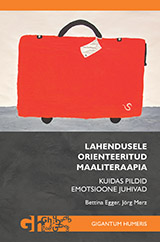





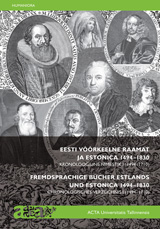 ISBN 978-9985-58-974-8
ISBN 978-9985-58-974-8  ISBN 978-9985-58-975-5
ISBN 978-9985-58-975-5 ISBN 978-9985-58-976-2
ISBN 978-9985-58-976-2 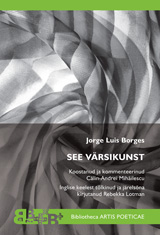


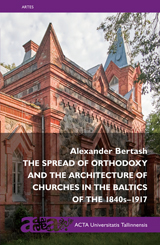



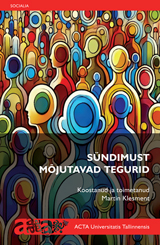
 ISBN 978-9985-58-969-4
ISBN 978-9985-58-969-4  ISBN 978-9985-58-967-0
ISBN 978-9985-58-967-0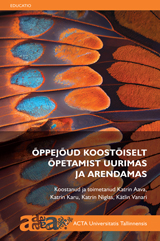
 ISBN 978-9985-58-962-5
ISBN 978-9985-58-962-5
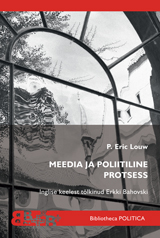

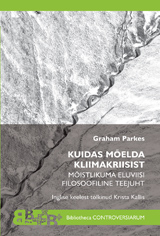
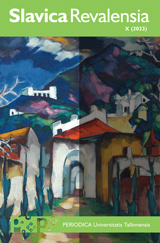
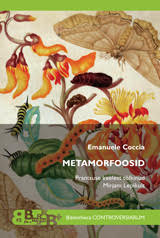

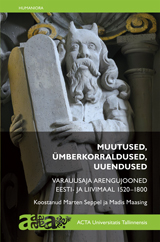
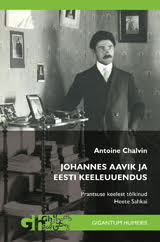

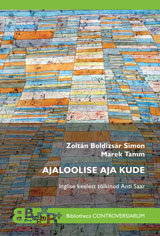
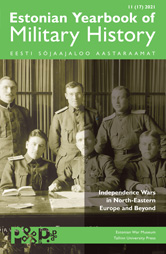
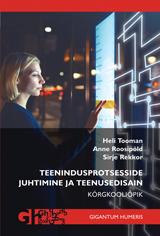

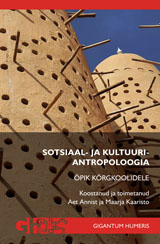
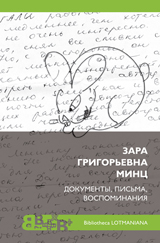
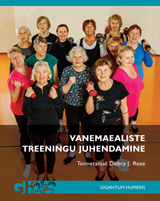
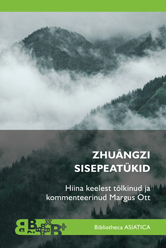
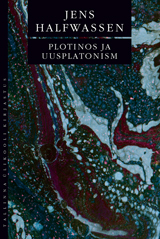

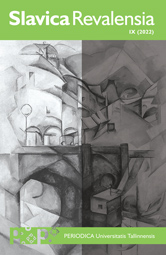

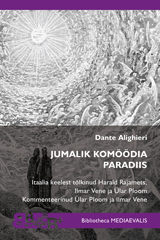


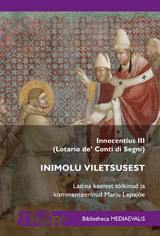

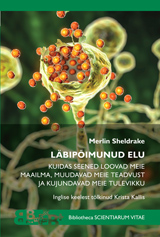
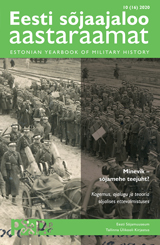


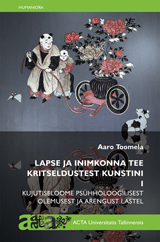

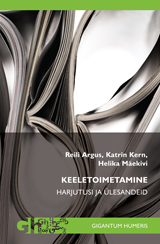

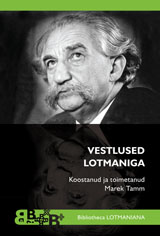



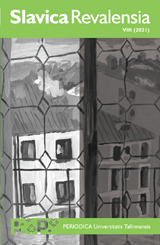

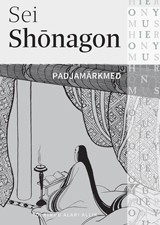

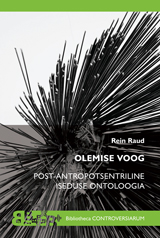
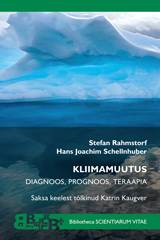

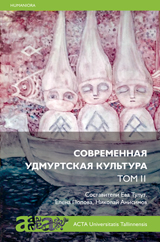
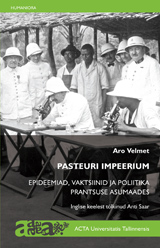
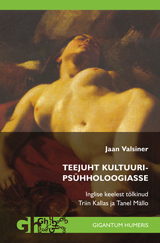
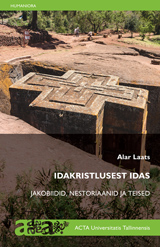
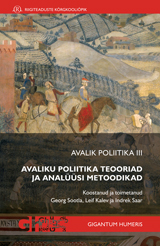
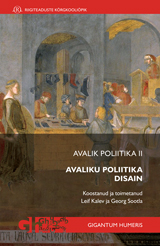



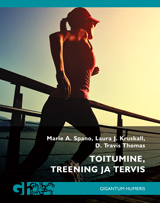
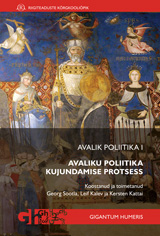
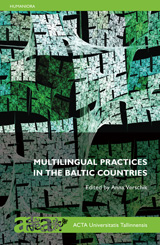
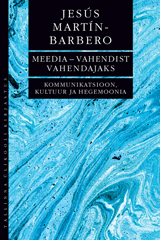
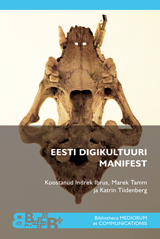
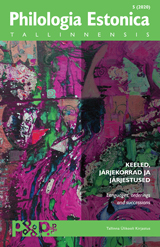
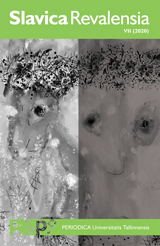



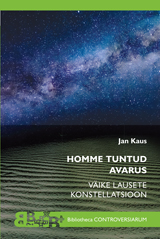
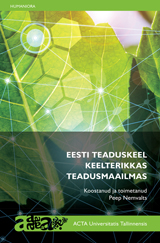

 ISBN 978-9985-58-887-1
ISBN 978-9985-58-887-1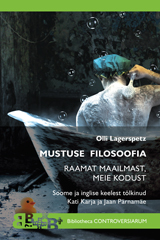
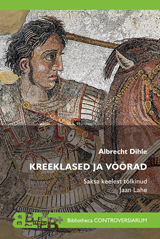
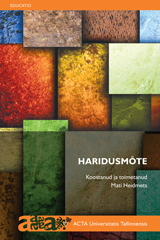
.jpg)
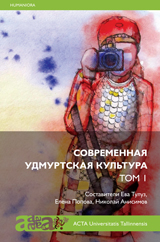
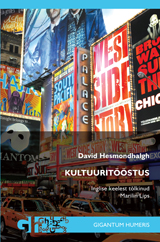
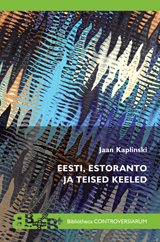

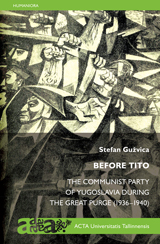

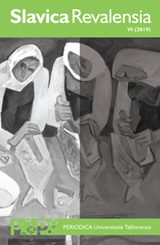
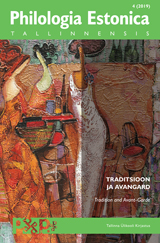
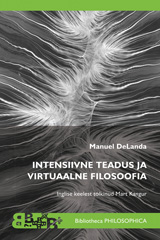
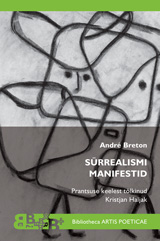



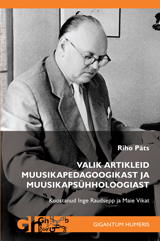

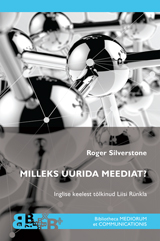
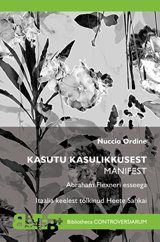


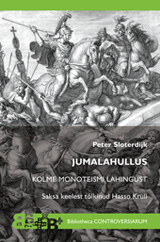

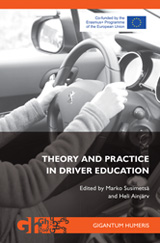
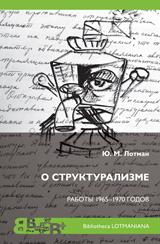



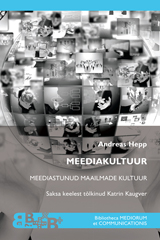



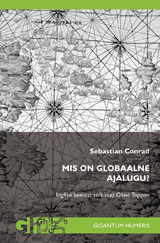

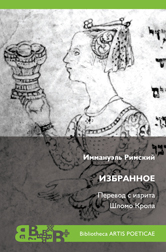




 ISSN 2228-0669
ISSN 2228-0669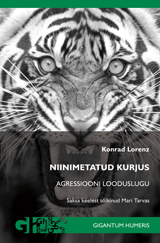
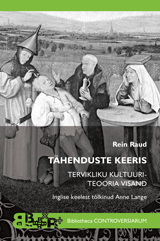
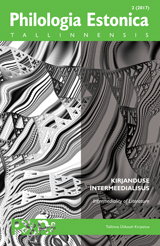
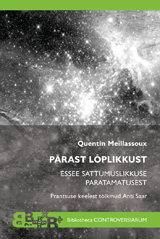


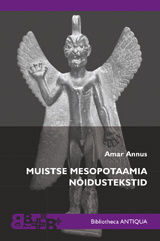
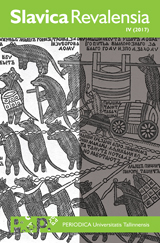


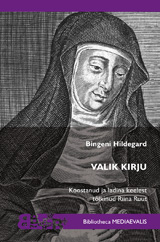


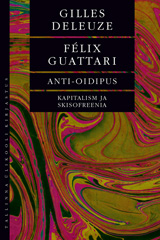
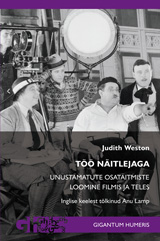


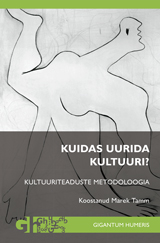
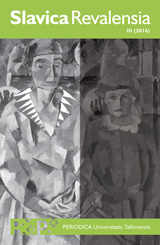
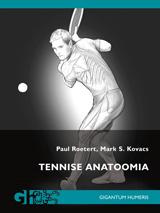
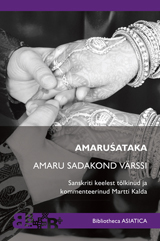
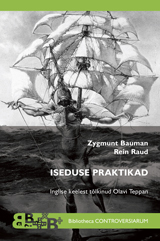

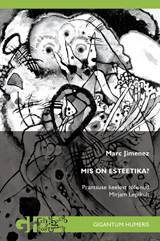
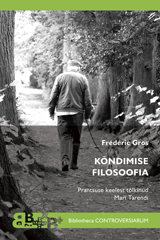






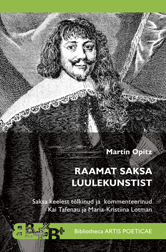
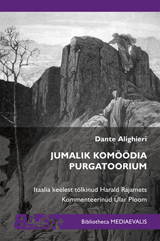



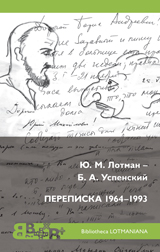
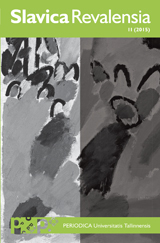
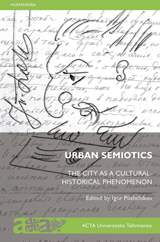





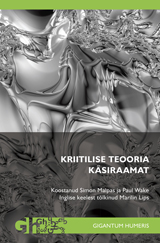




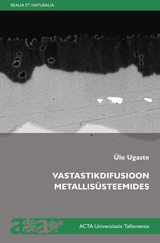
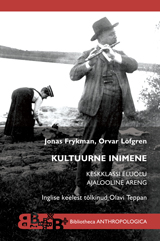
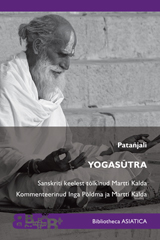

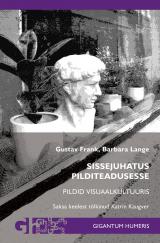

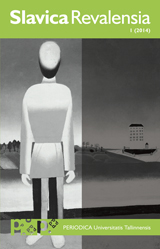
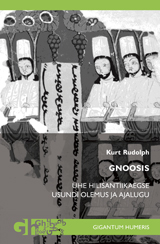
.jpg)




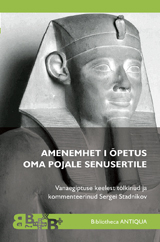


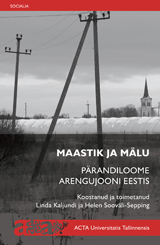


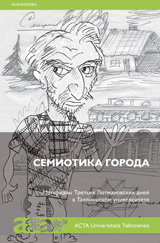
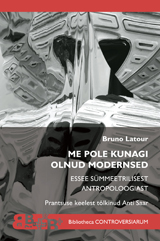





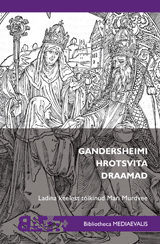
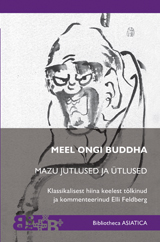
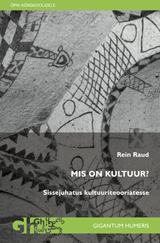

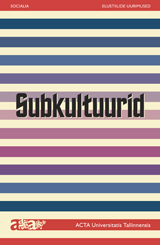

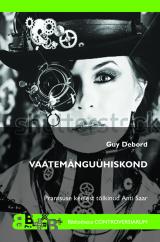
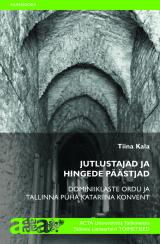
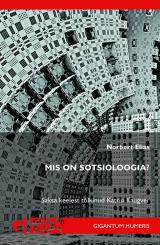
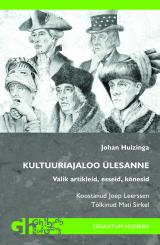
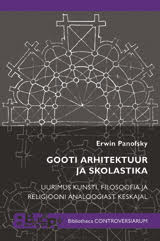
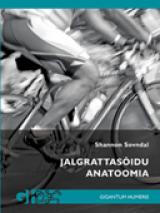
 Paperback
Paperback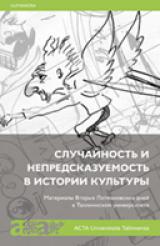
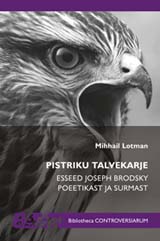
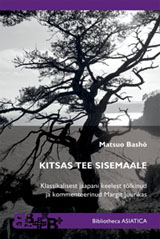
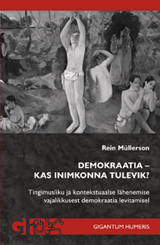
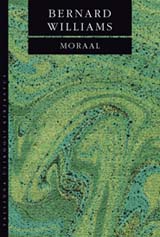



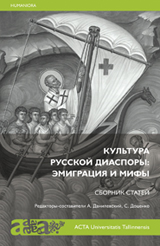
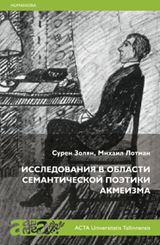
.jpg)

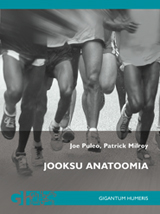

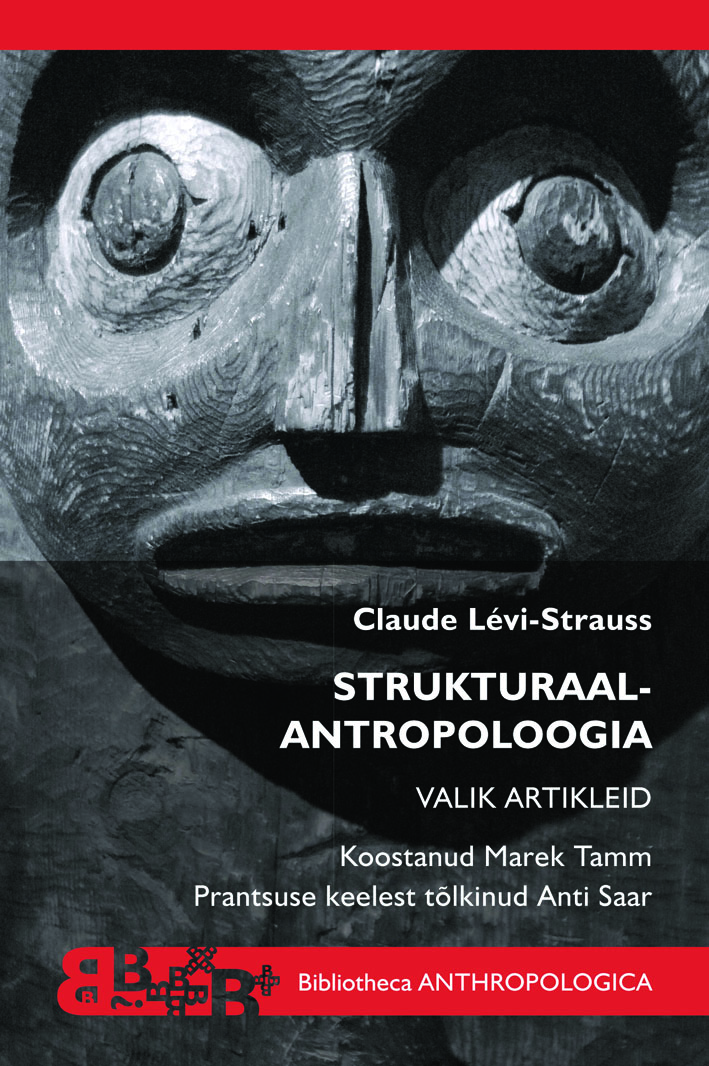






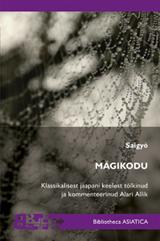

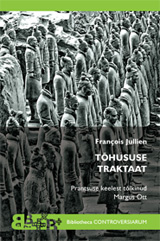
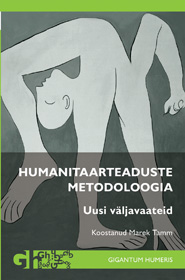
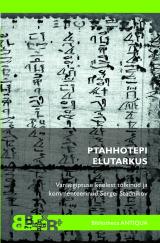
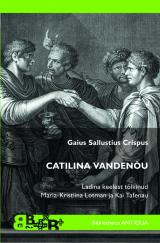


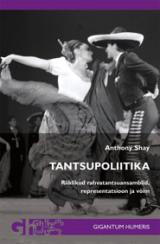

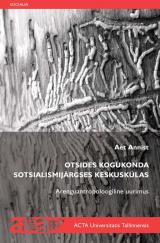
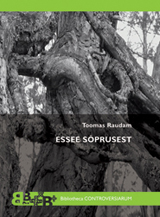
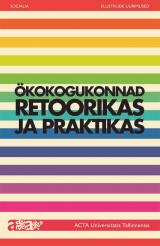
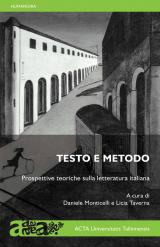
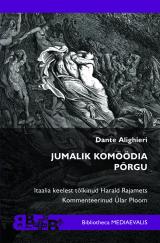
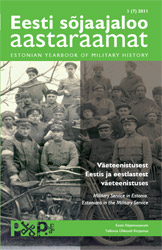

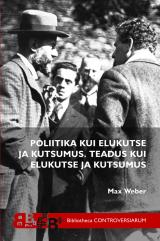
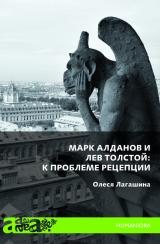
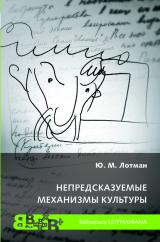
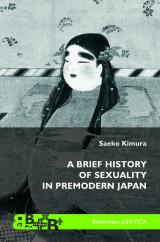
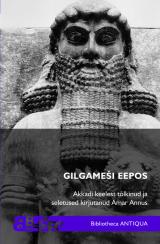


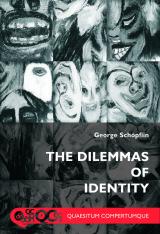 ISBN: 978-9985-58-701-0
ISBN: 978-9985-58-701-0
